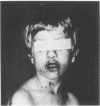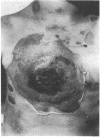Full text
PDF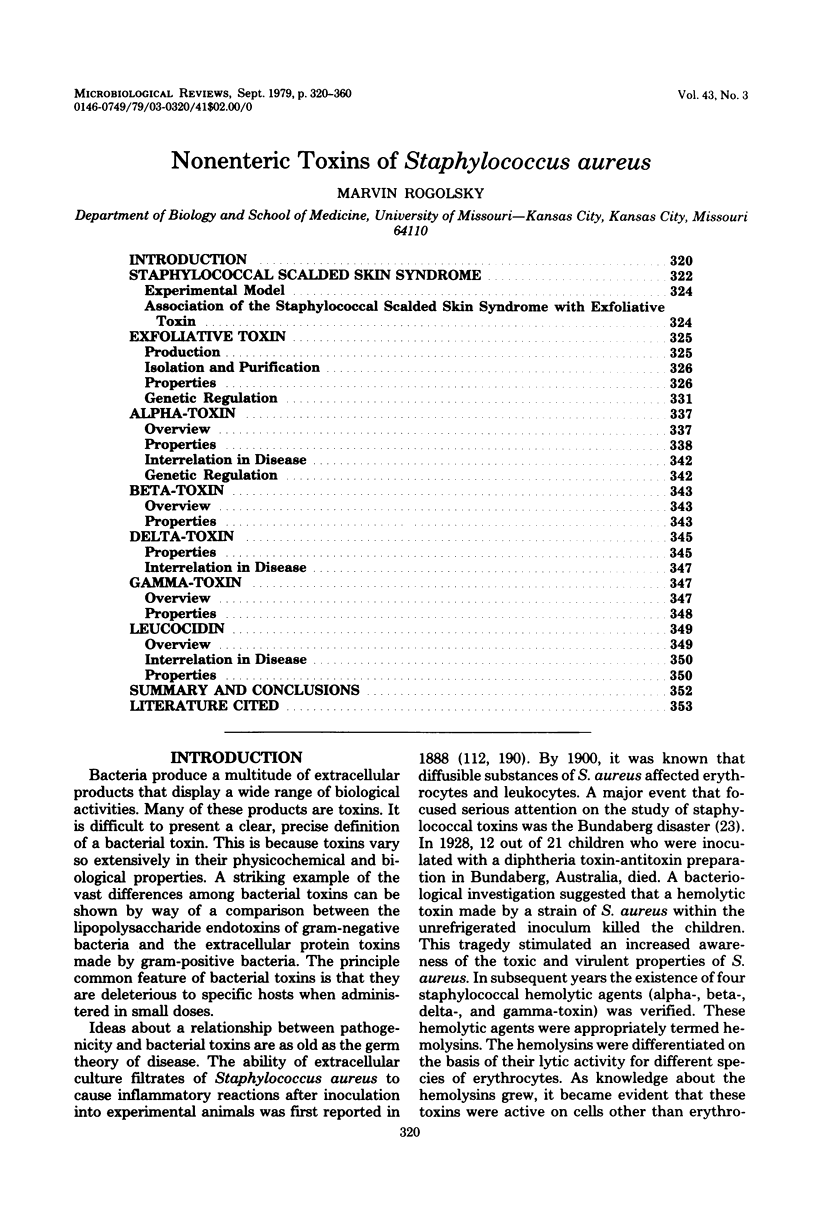
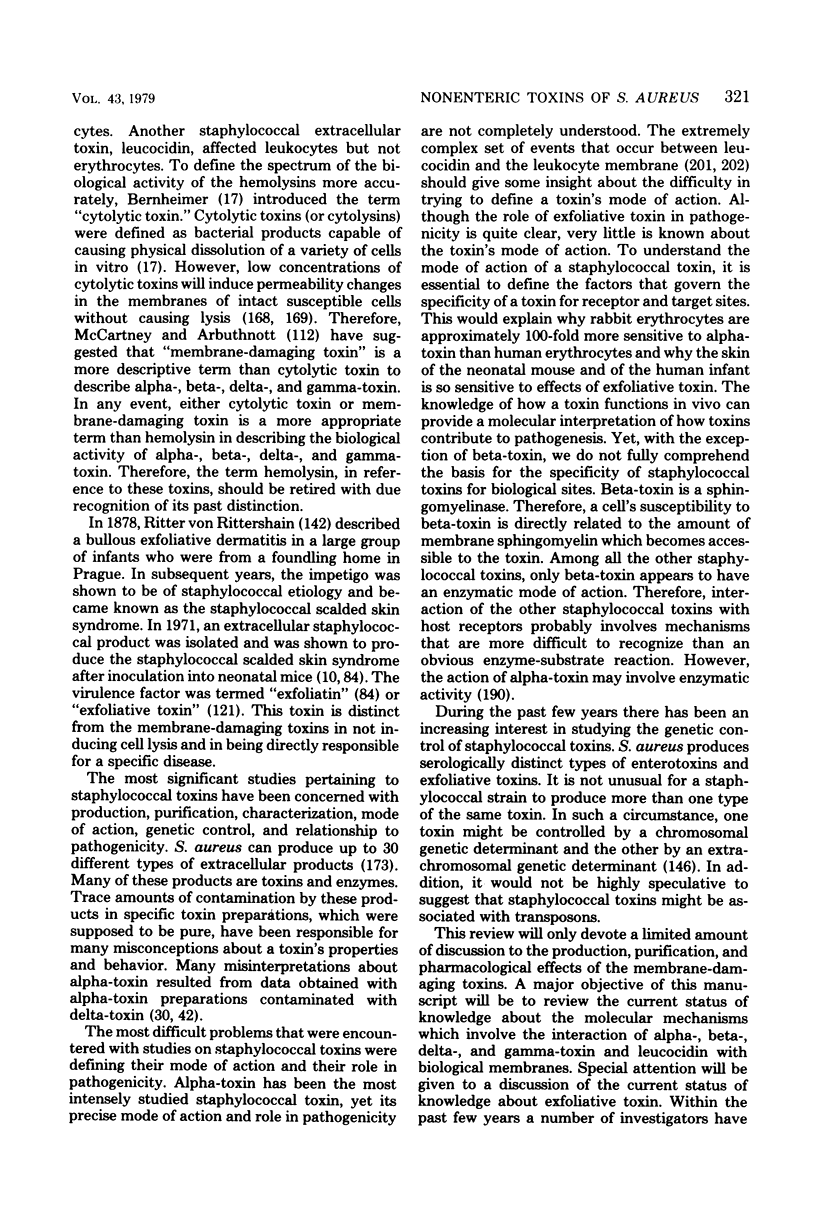
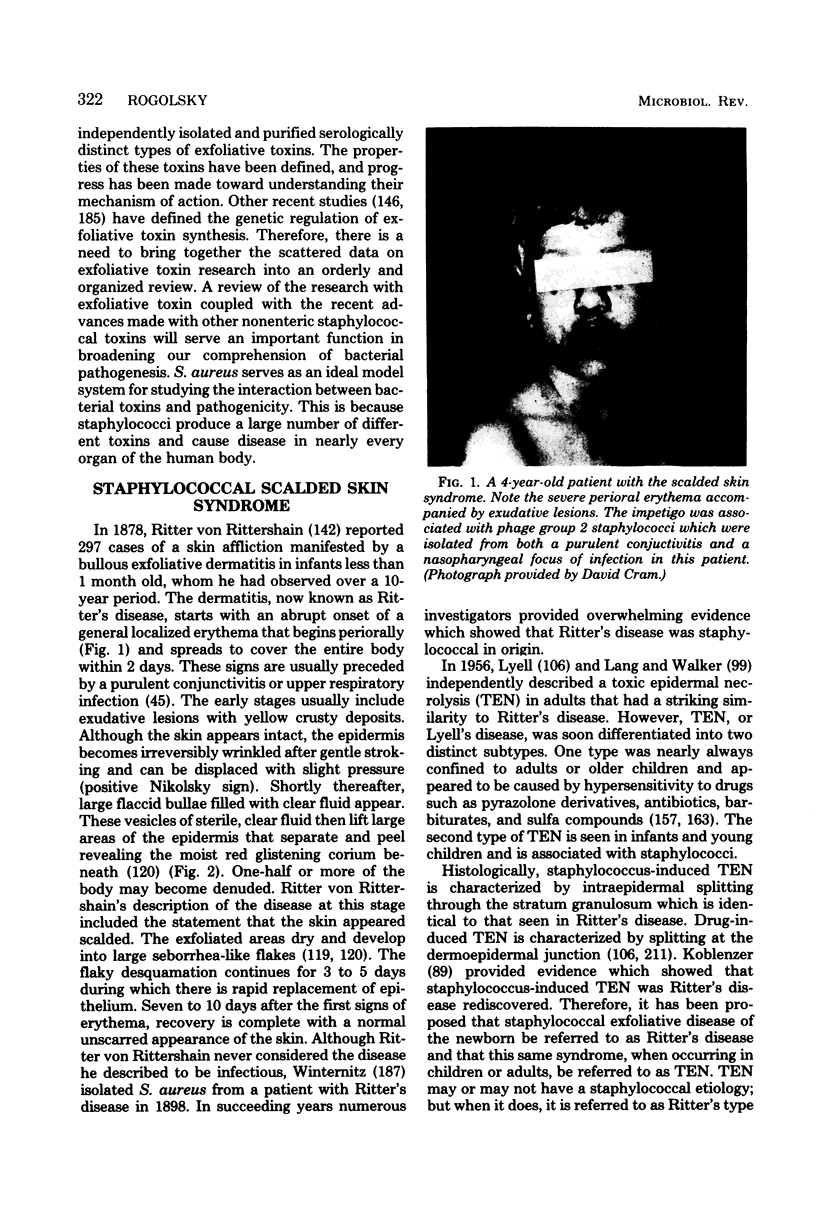
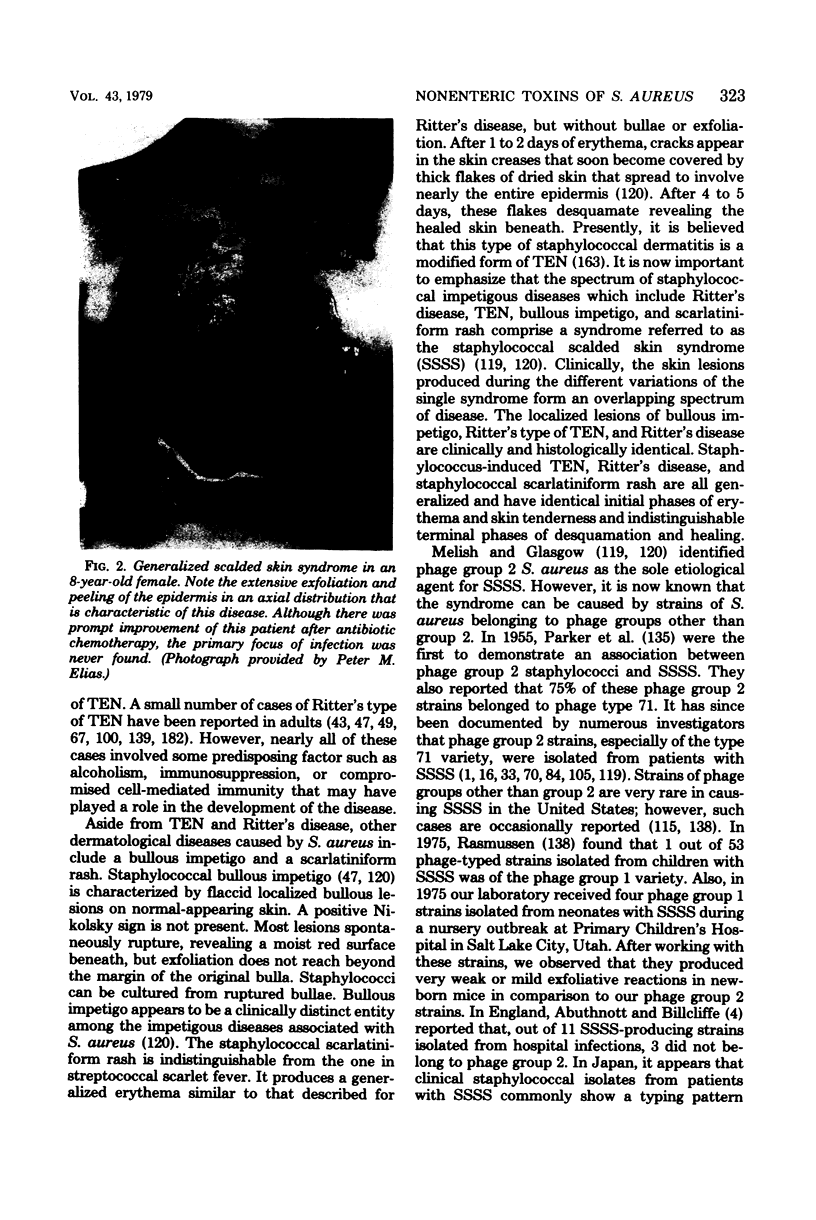
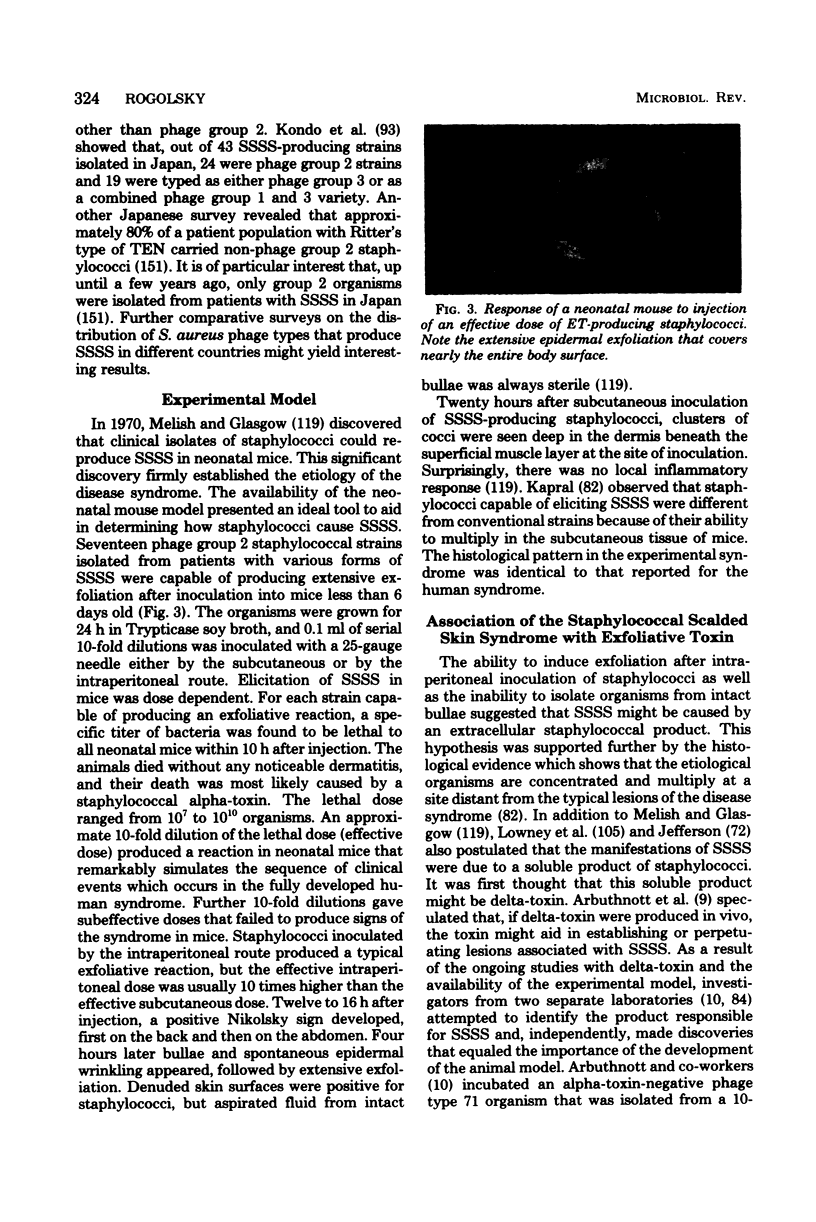


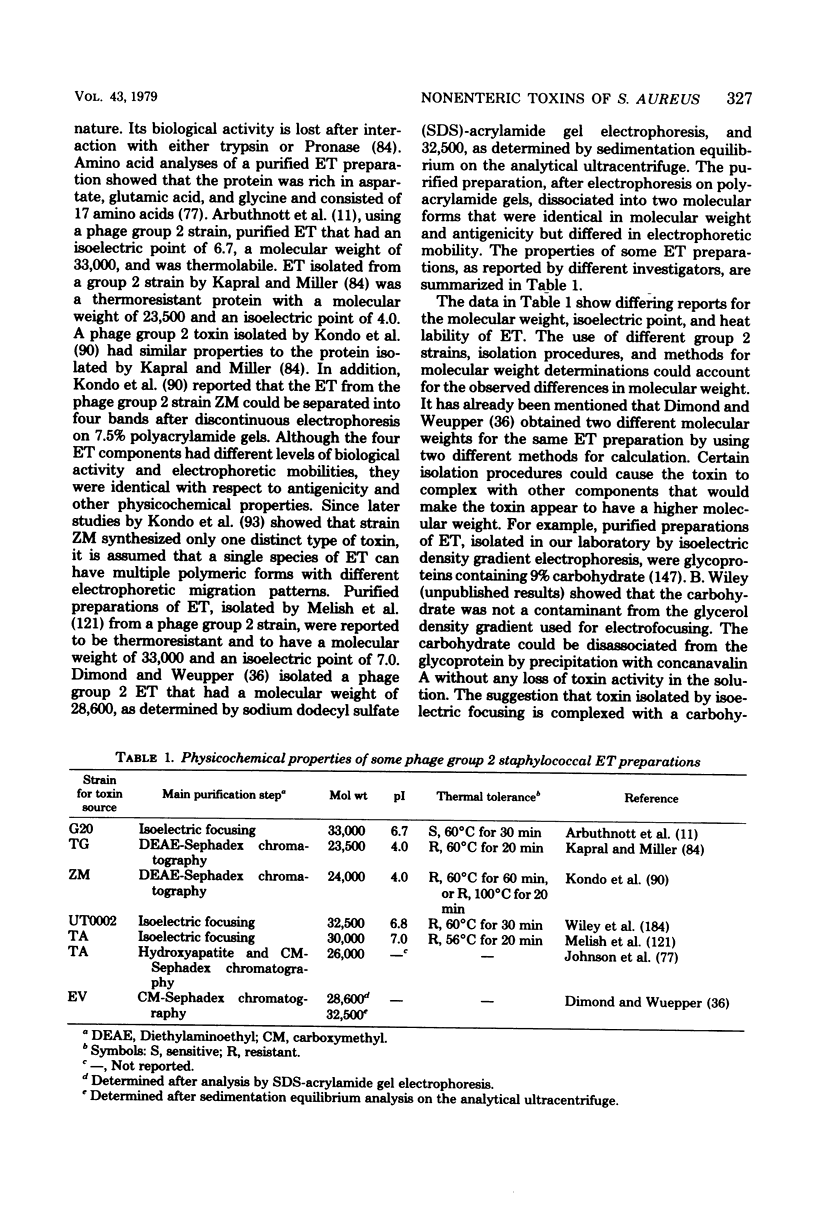
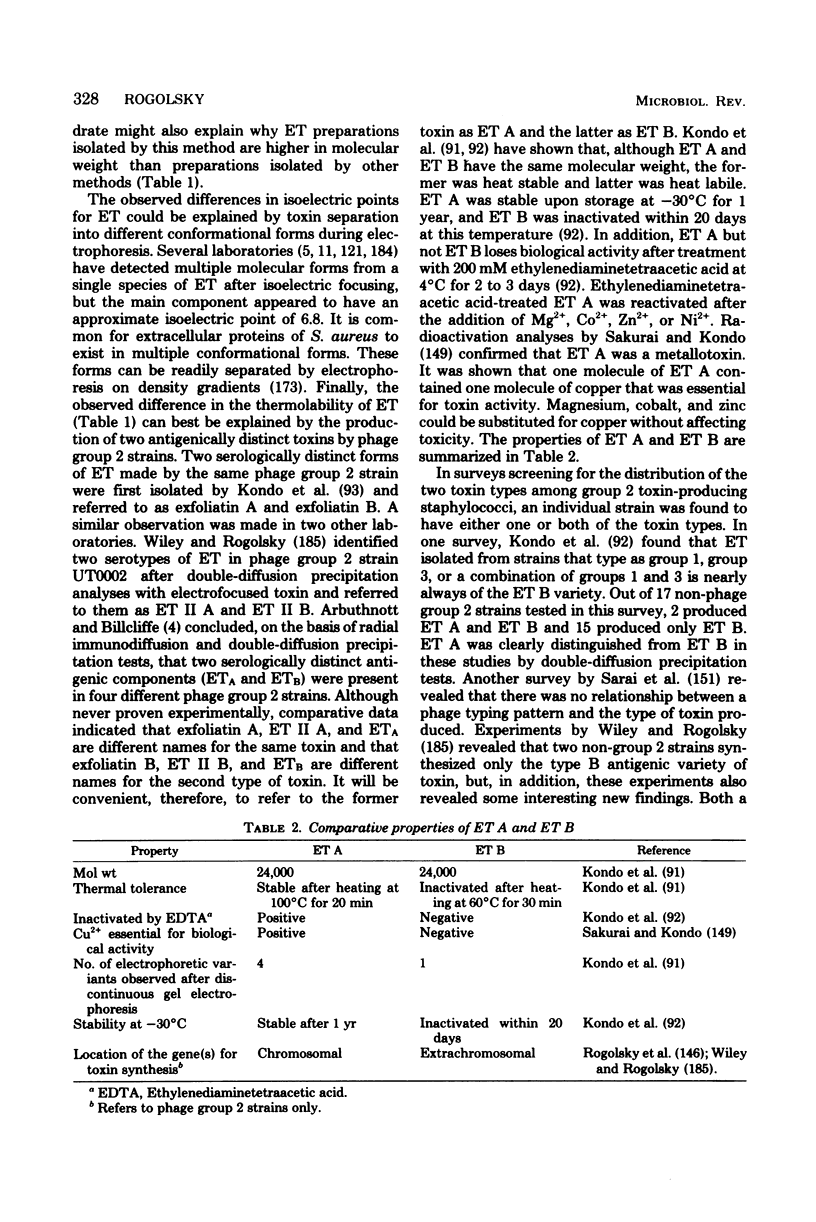
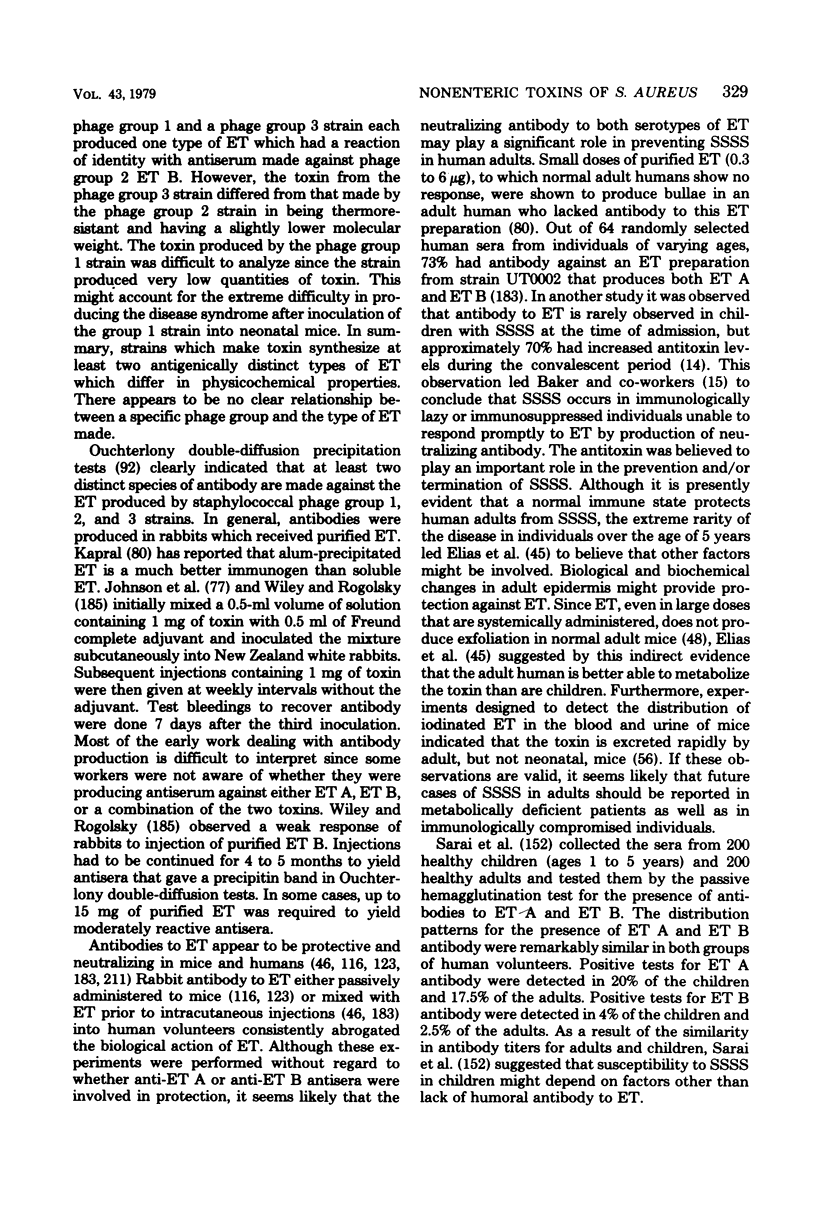
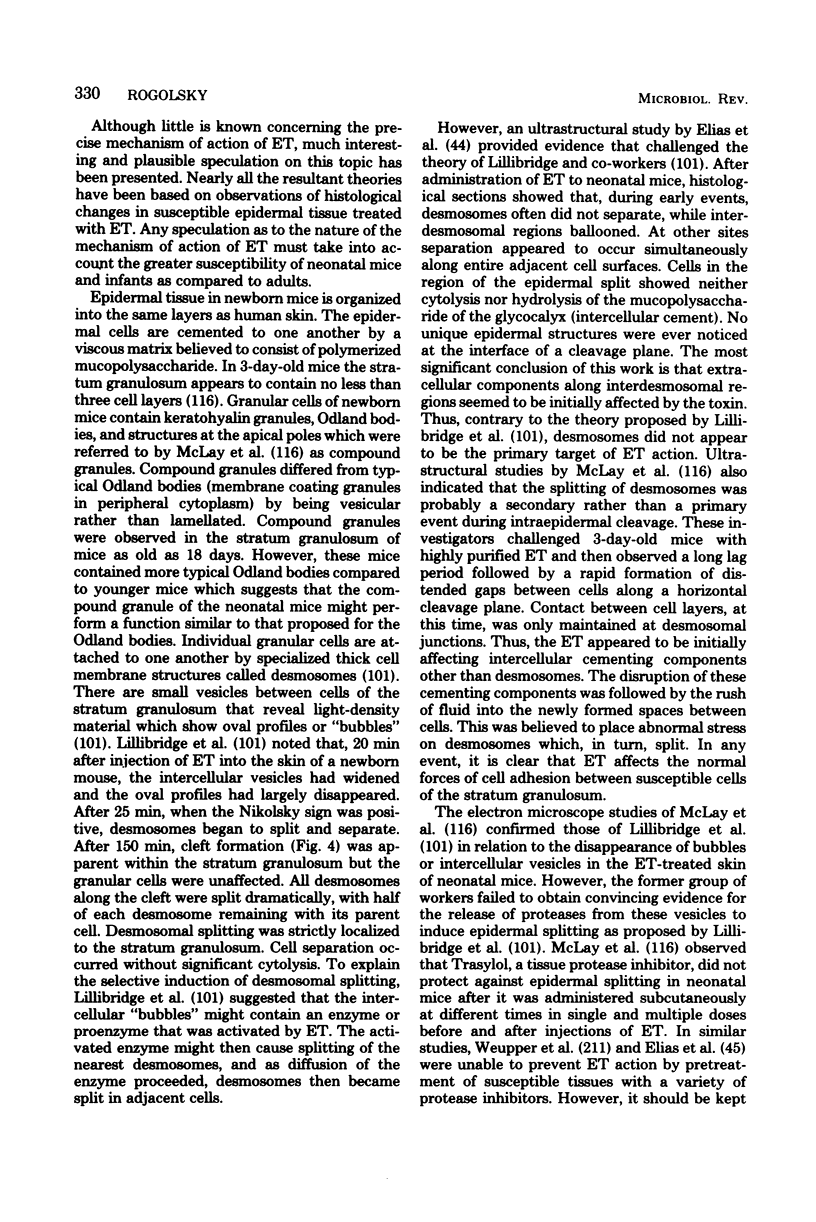

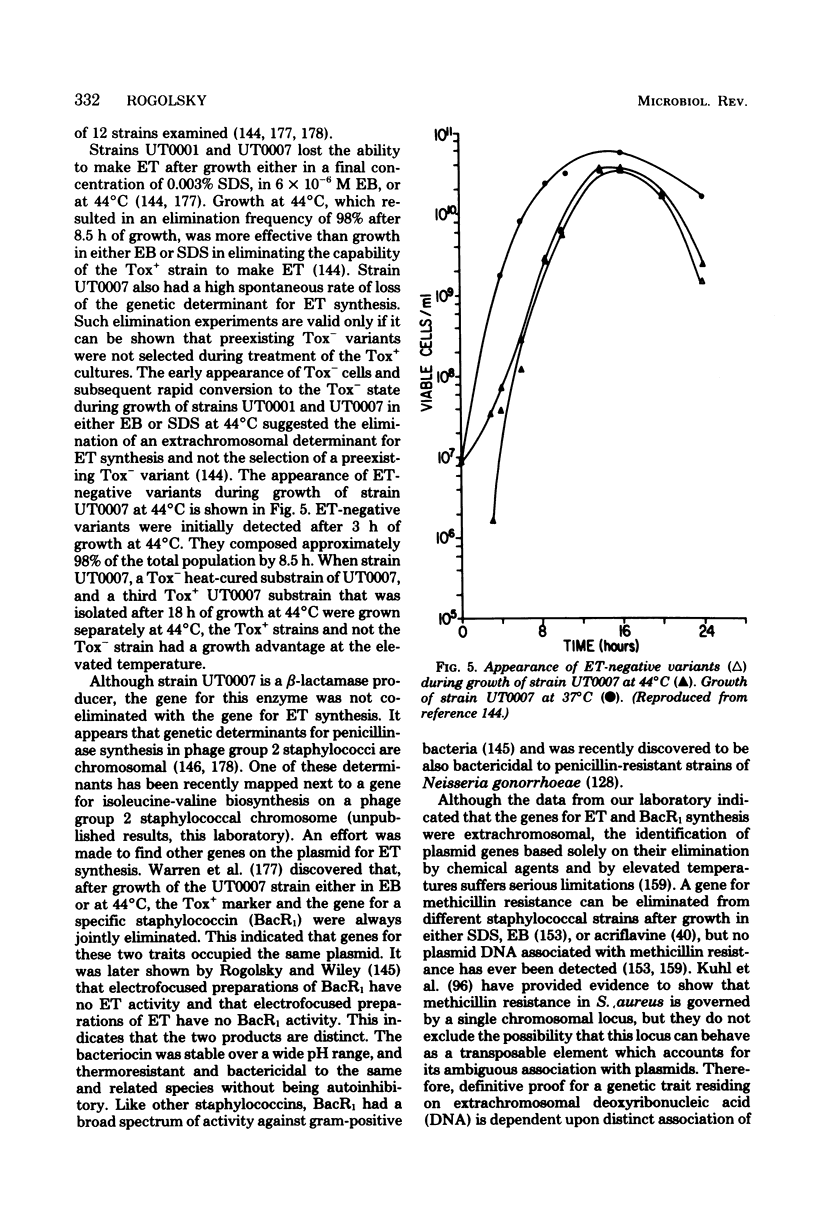
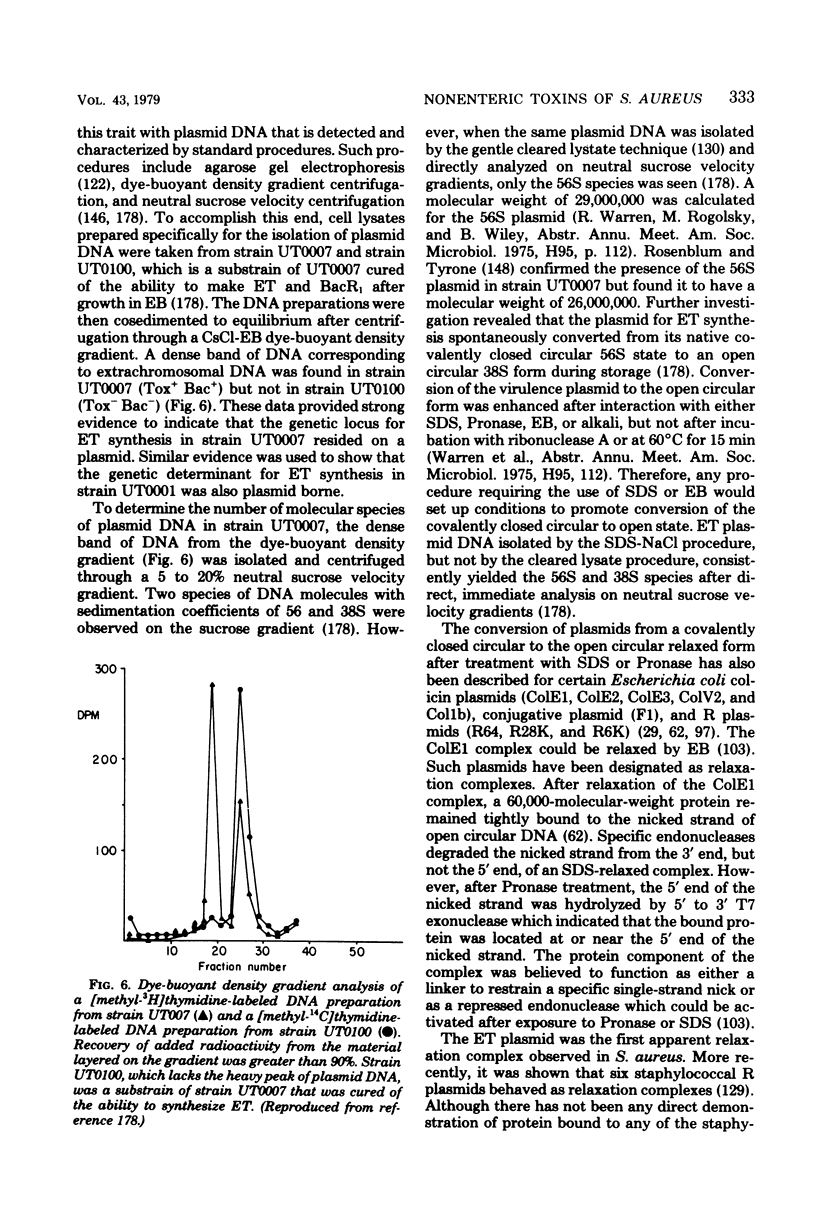
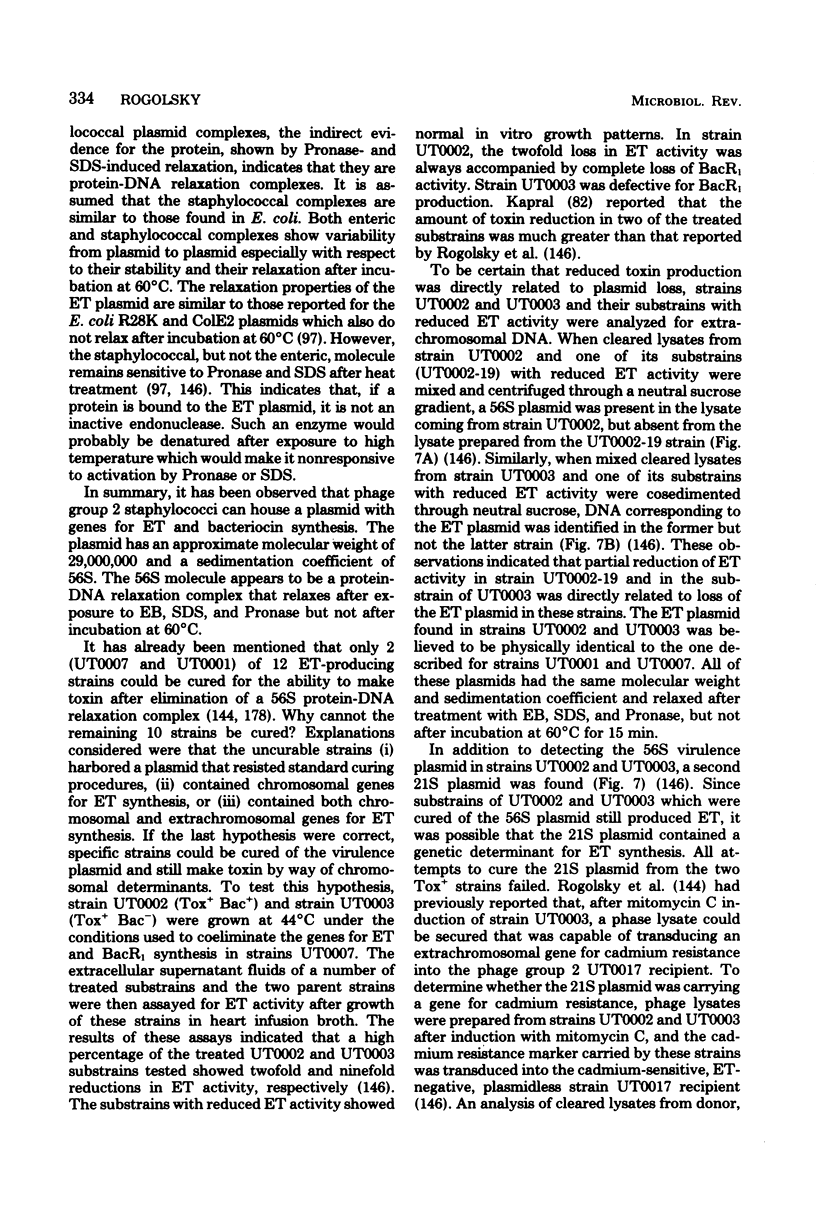
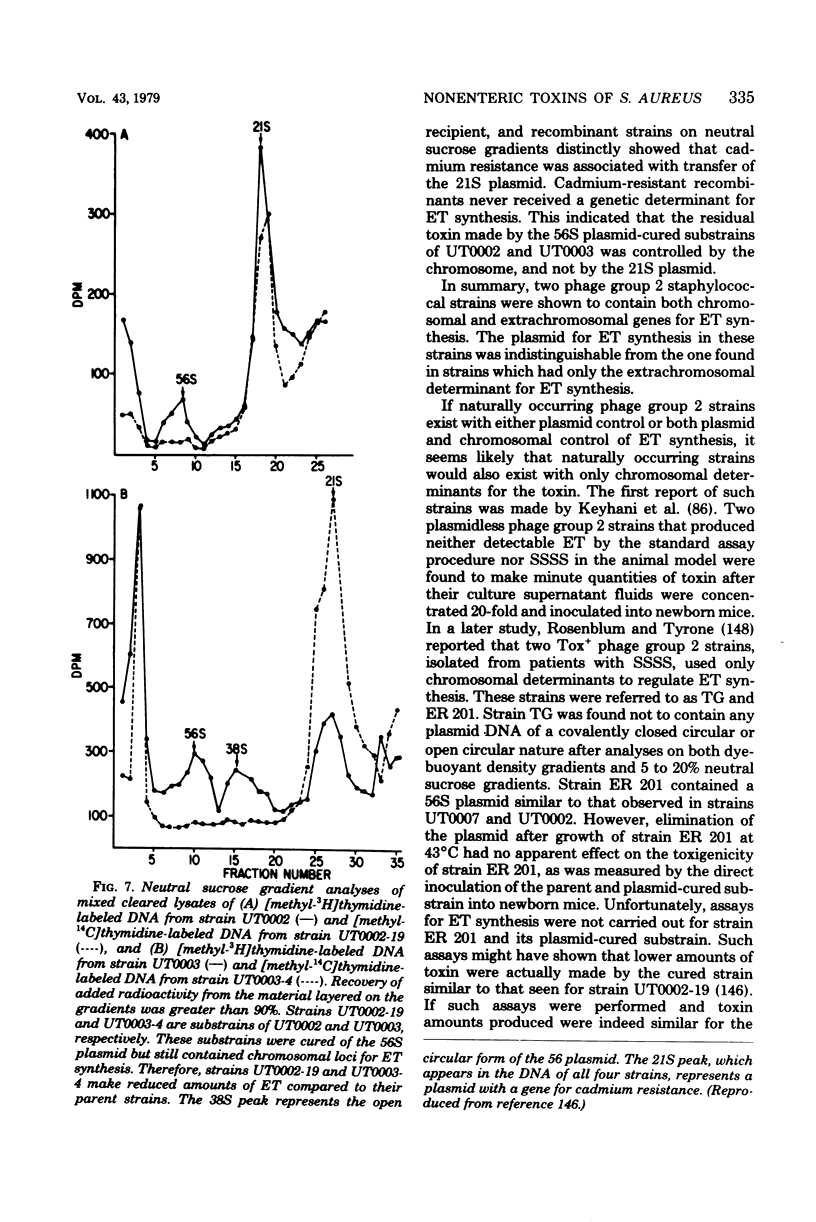

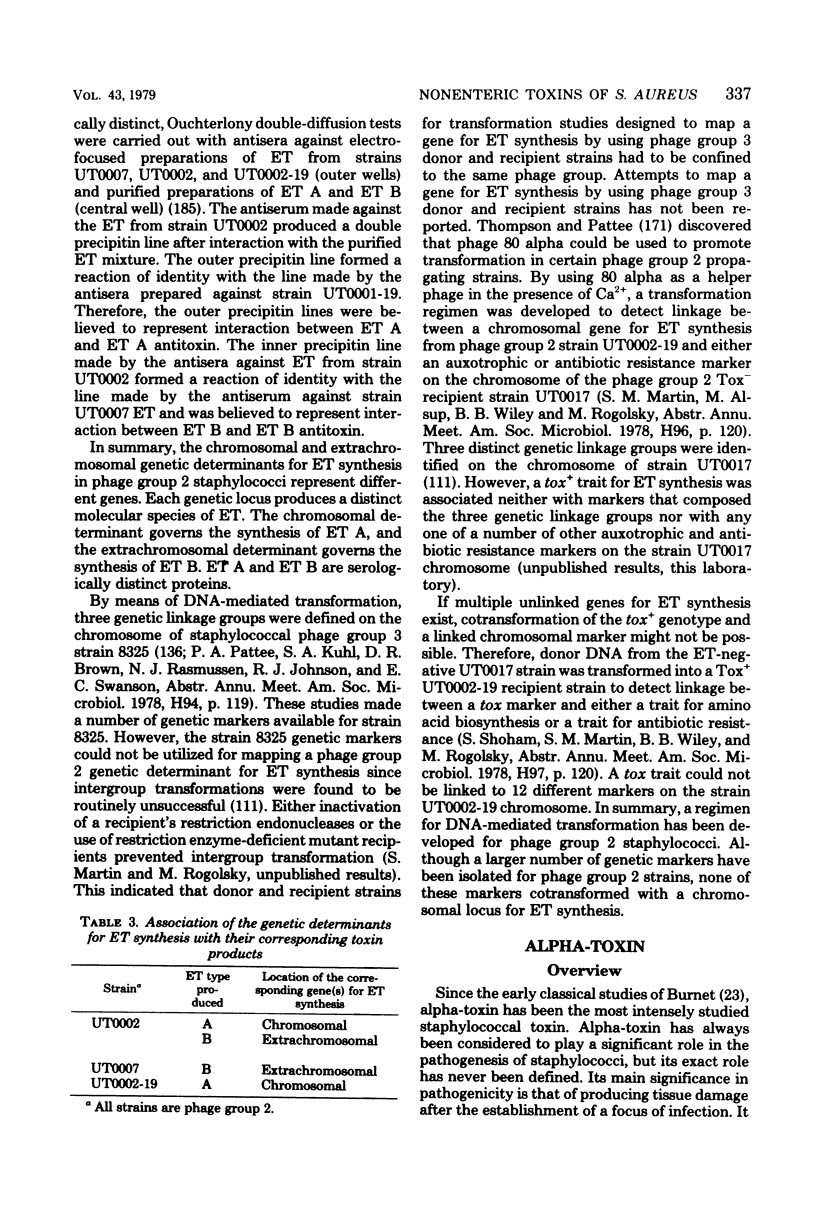
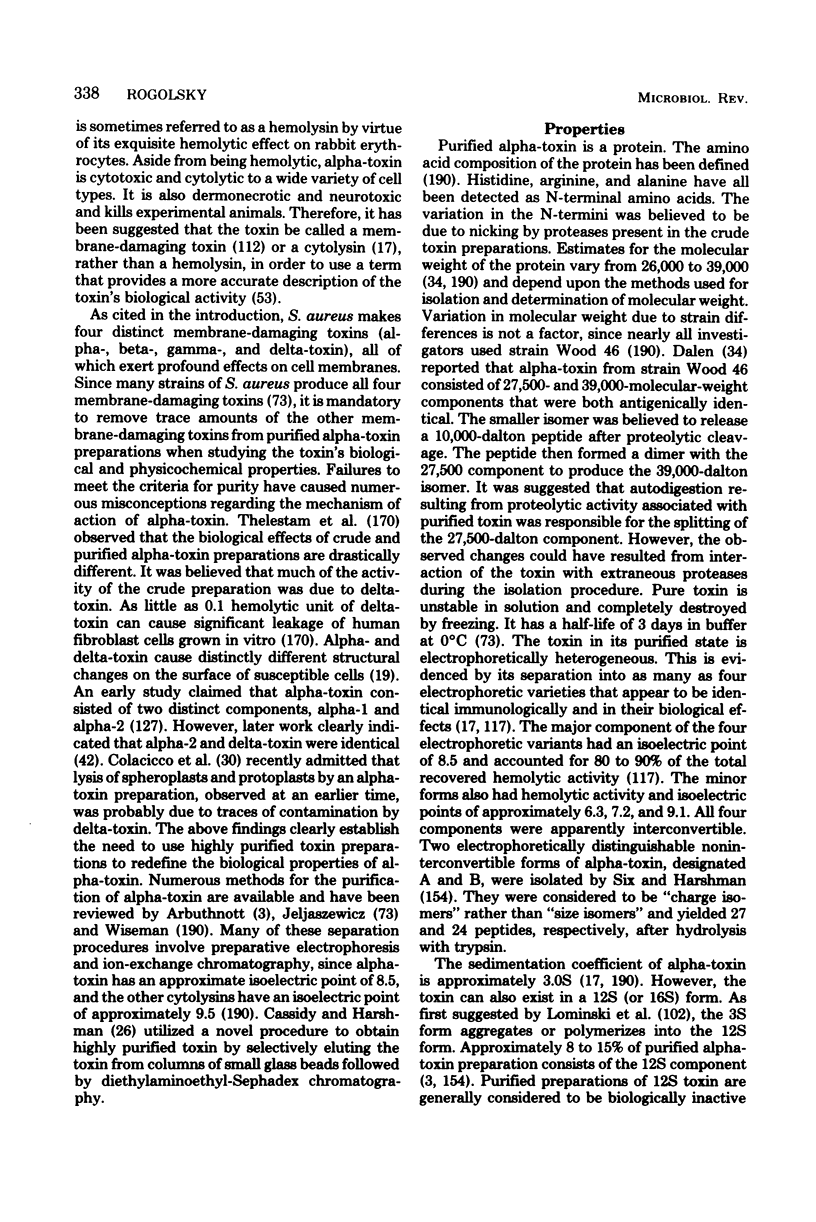
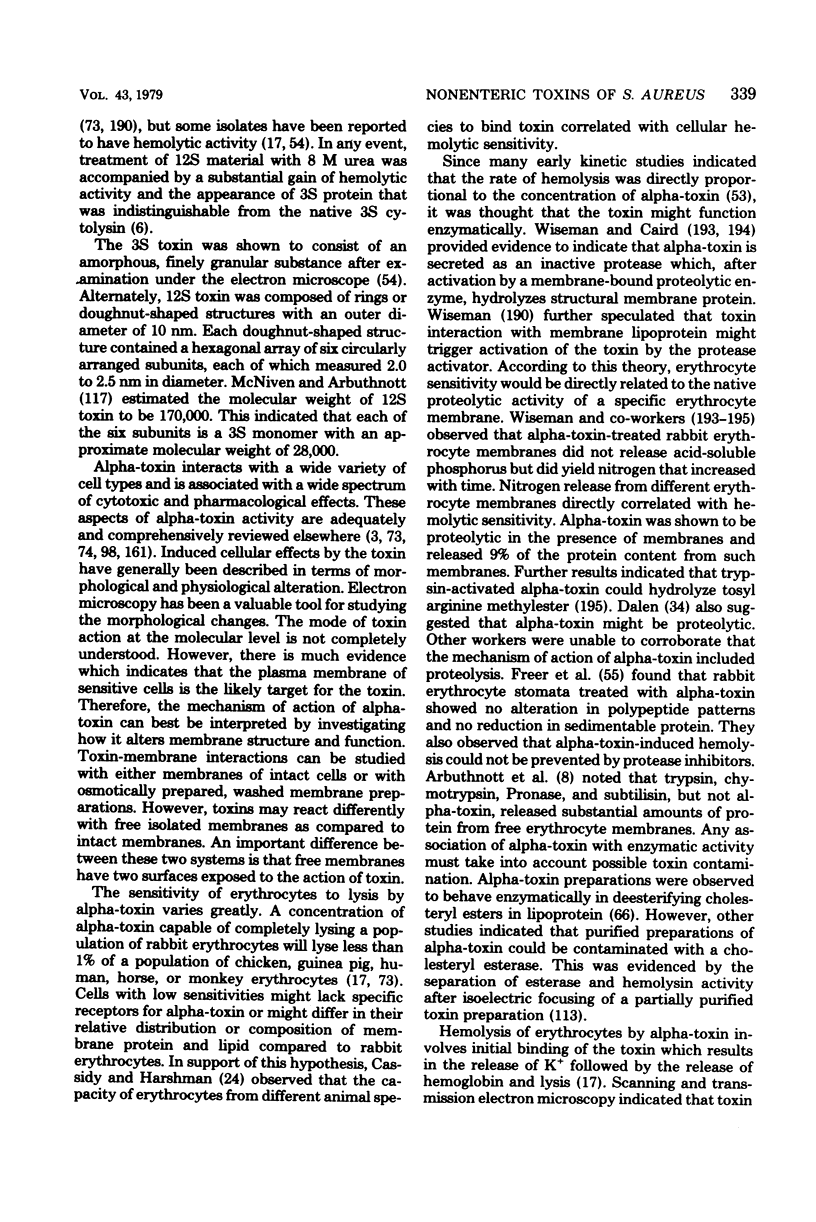

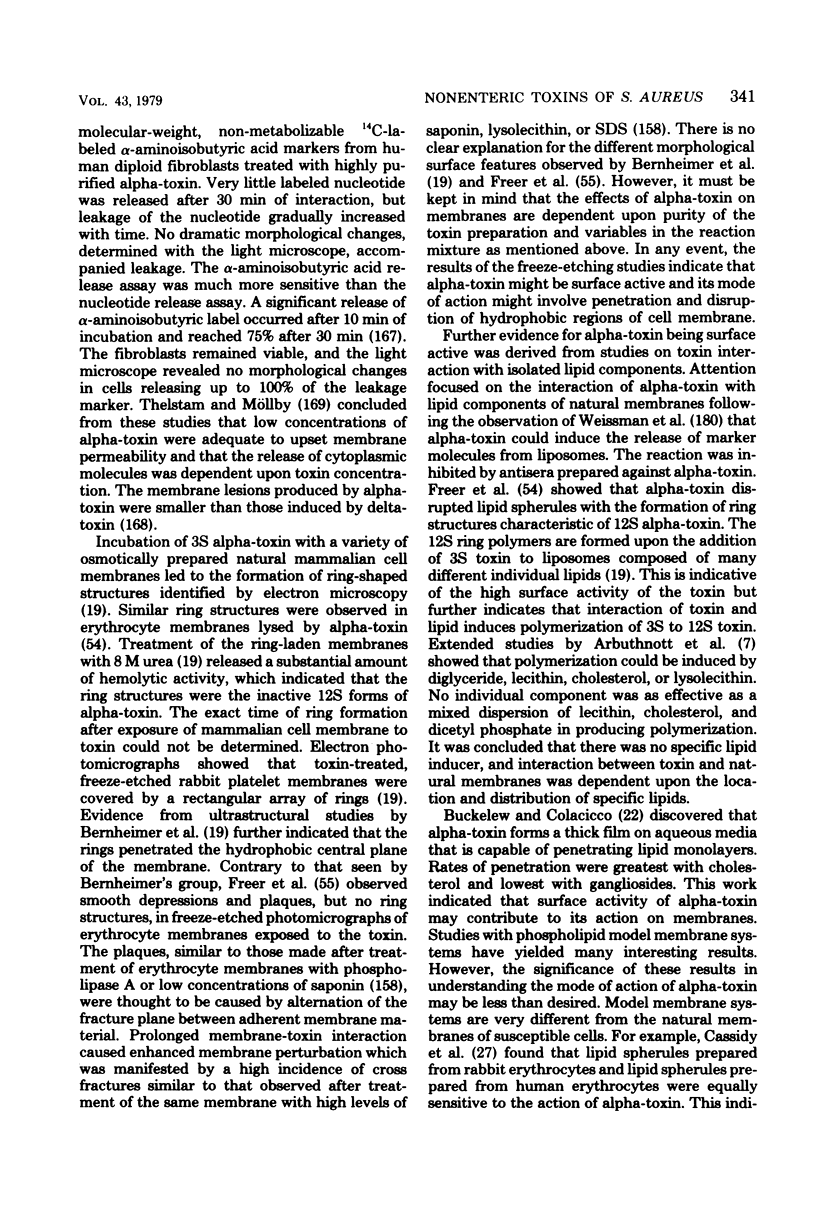
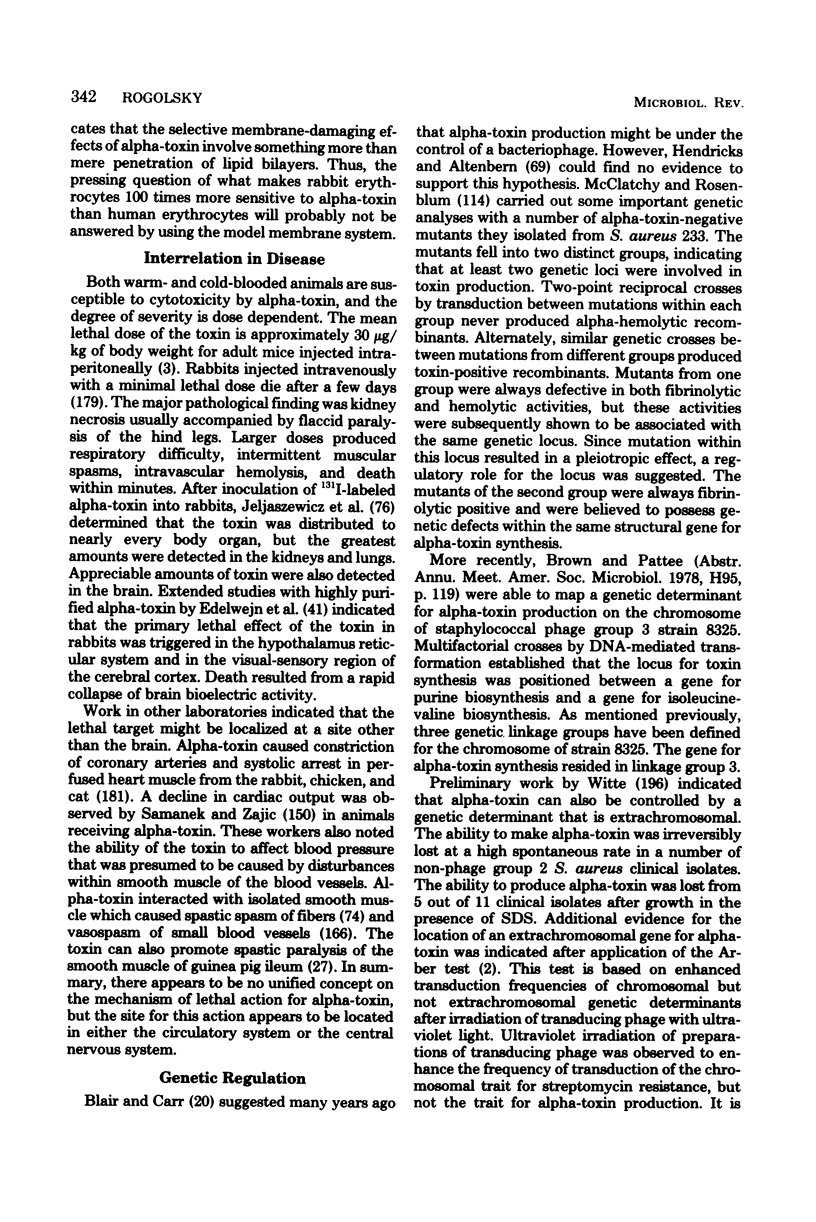
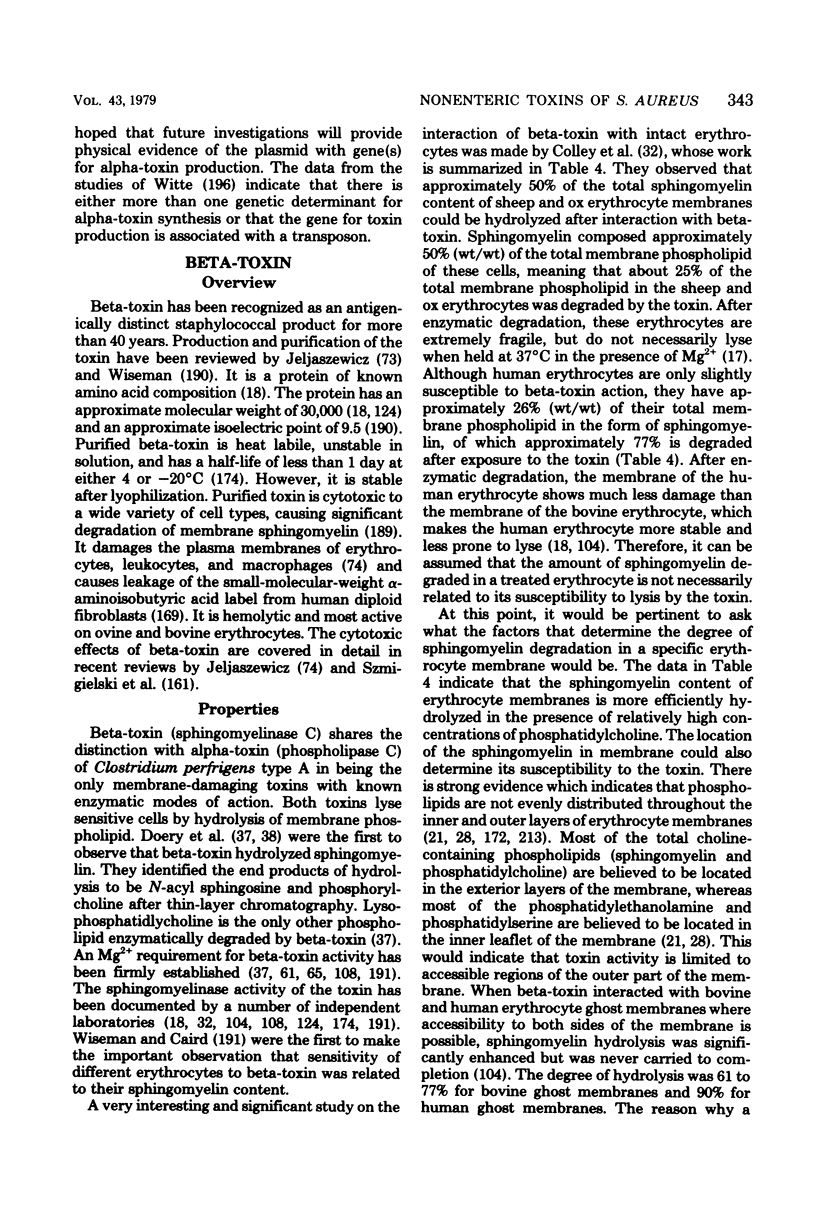
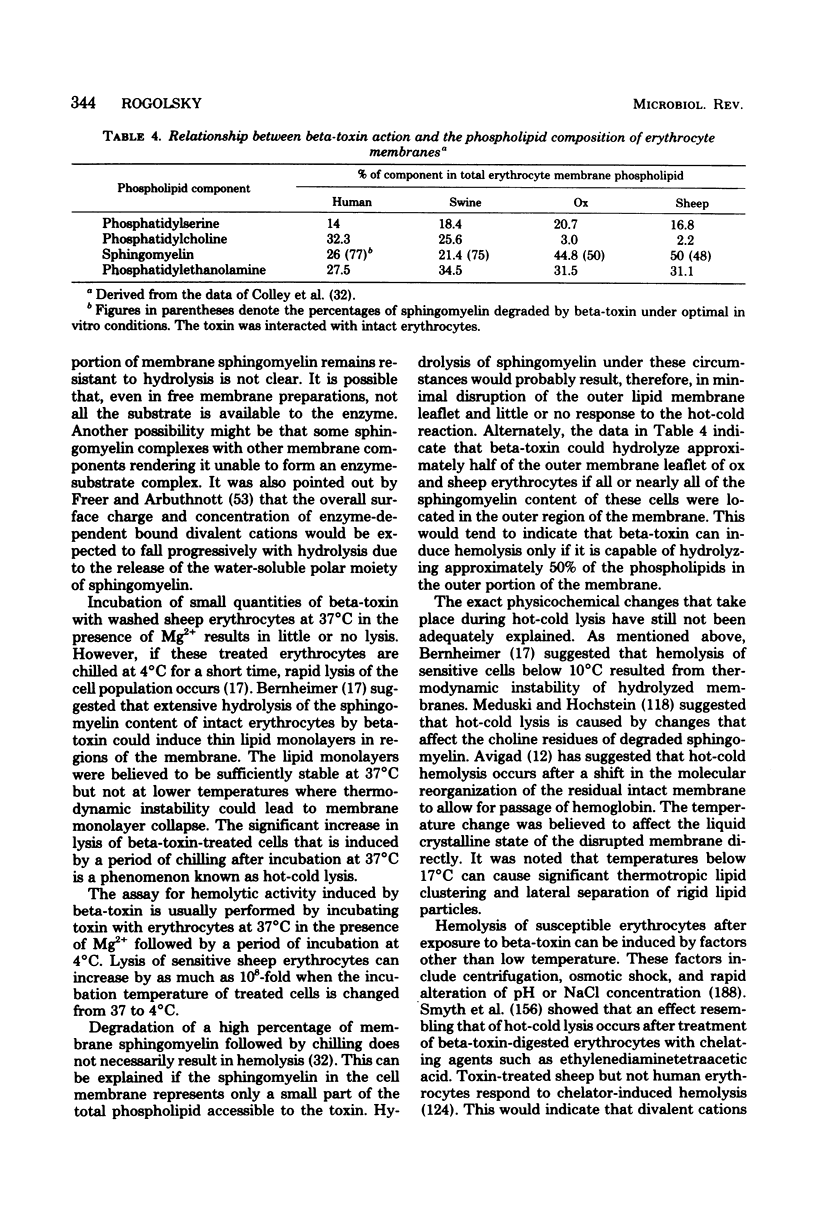
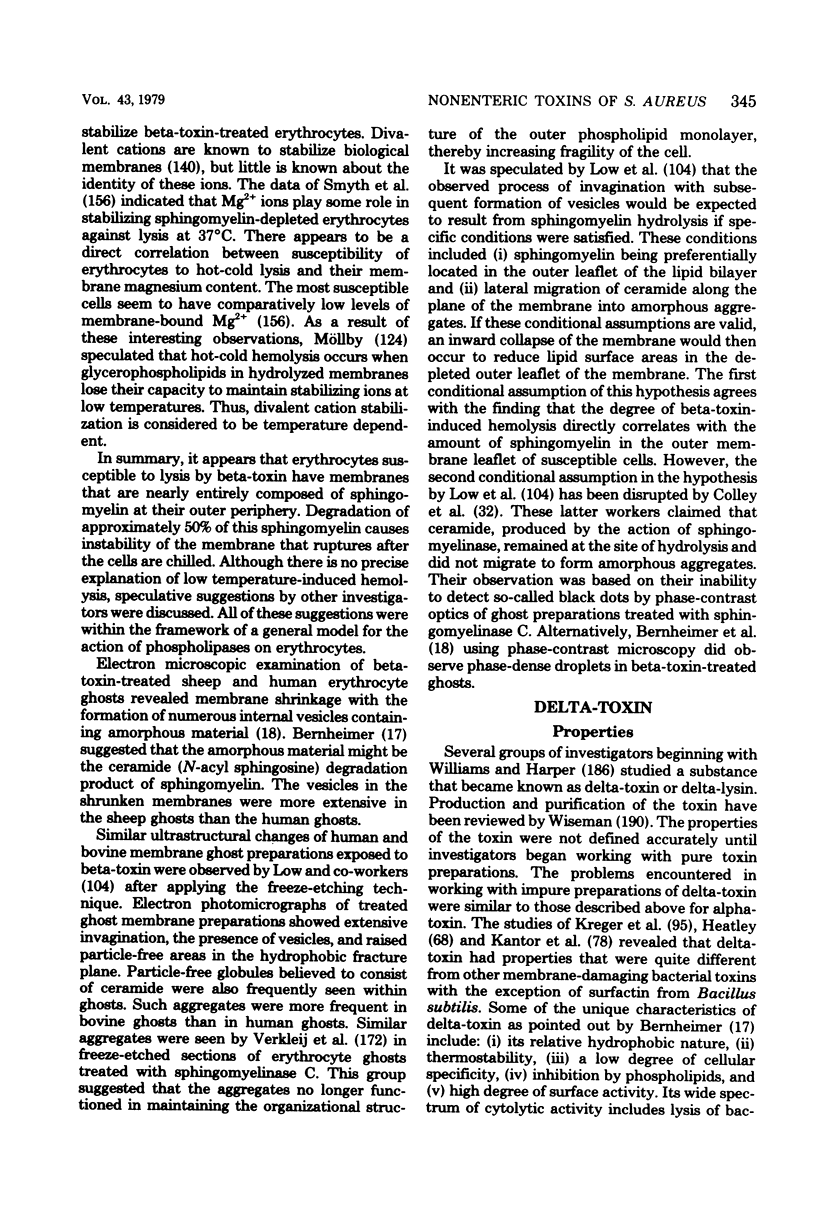
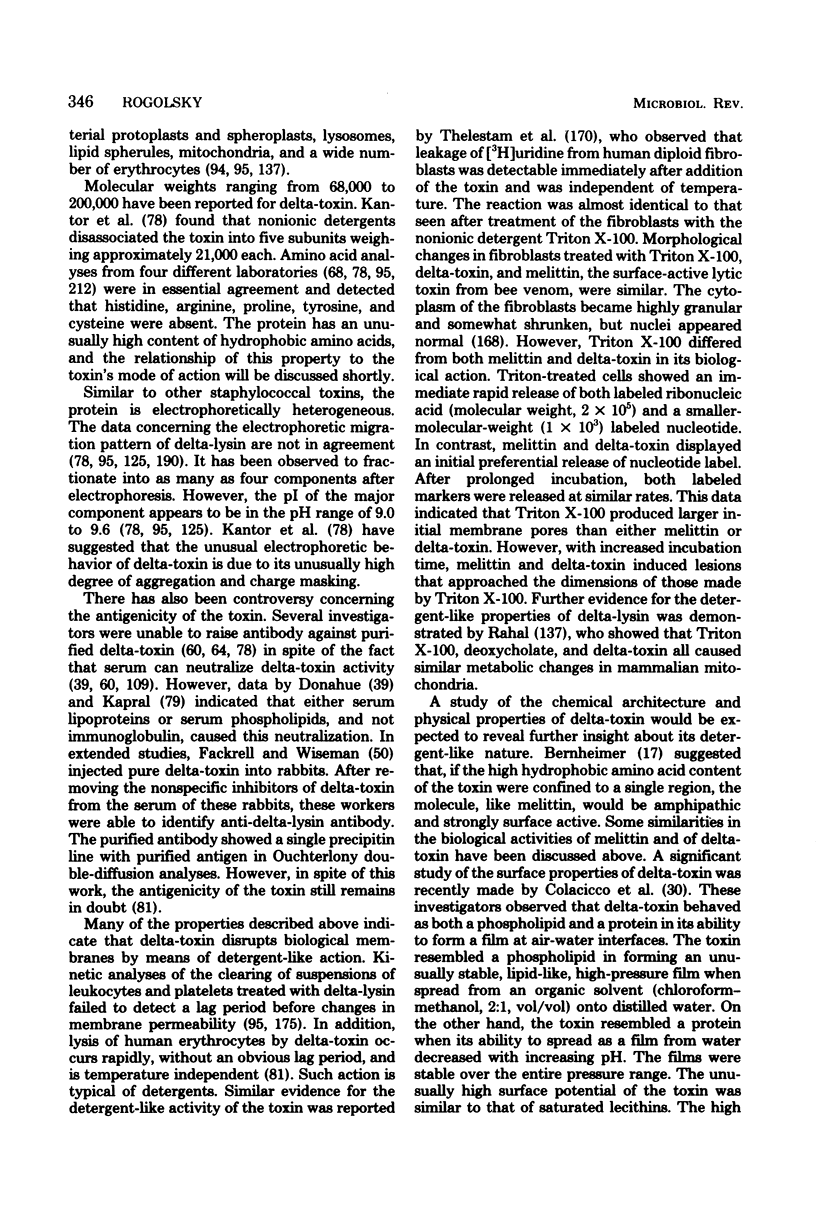
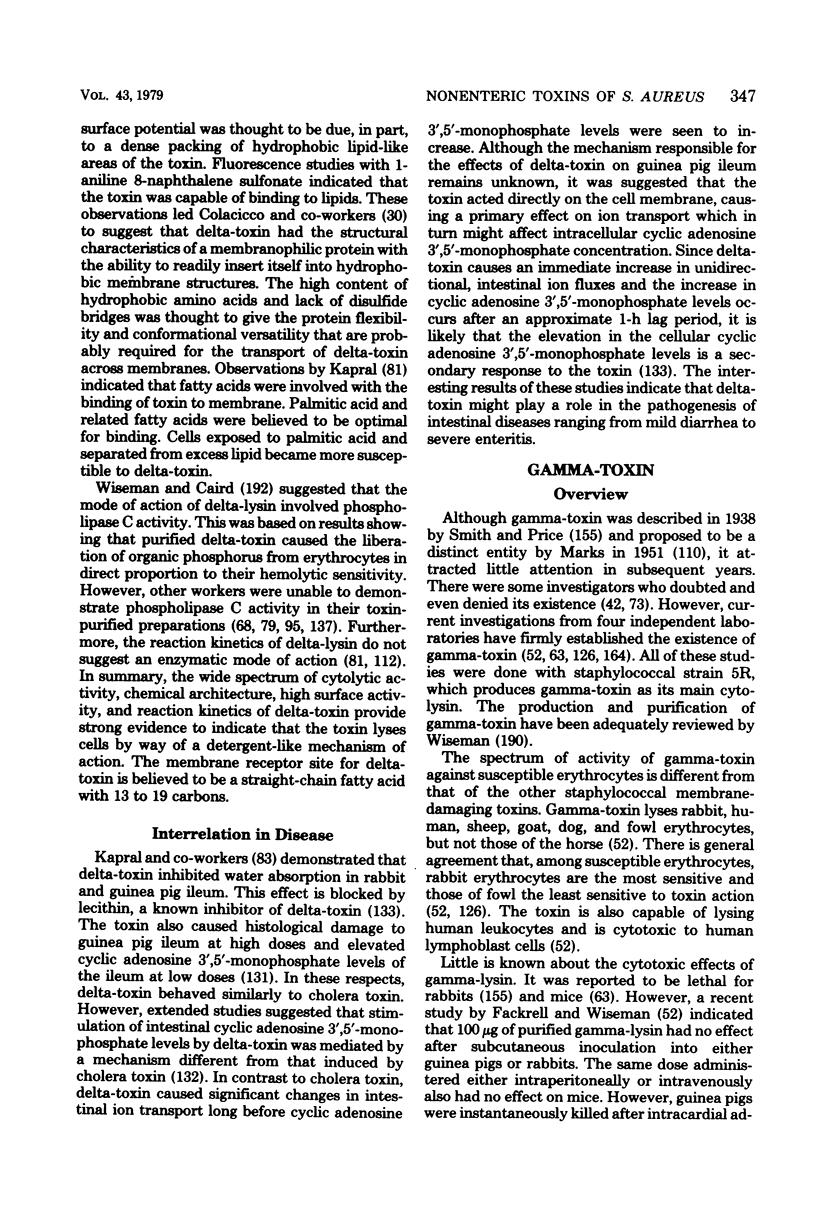
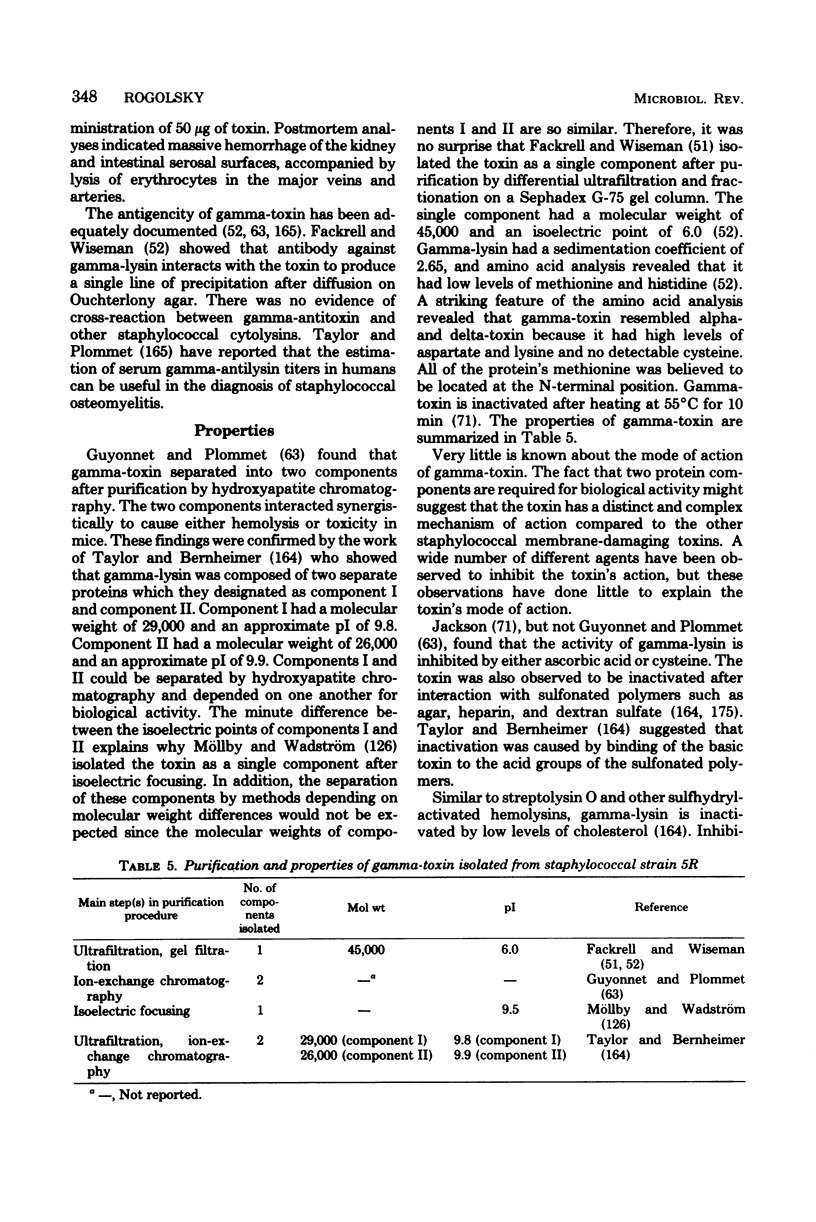
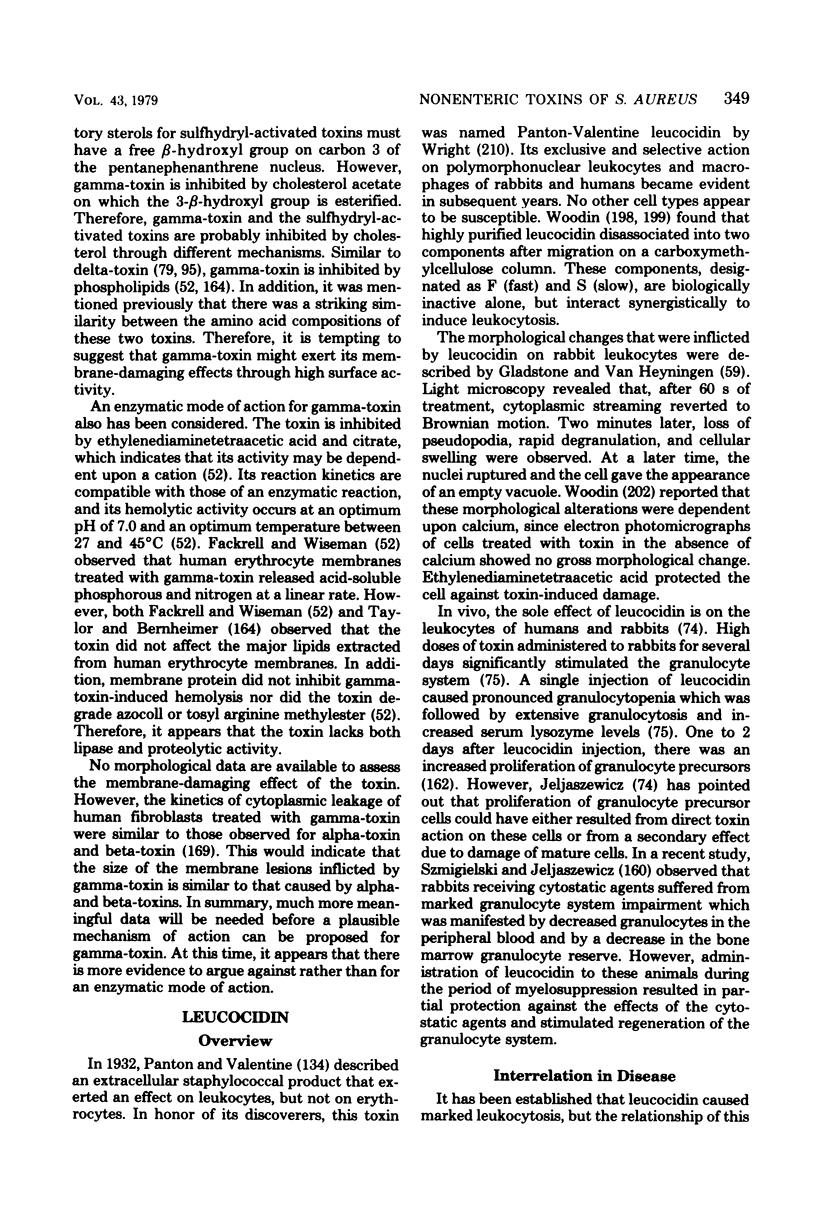
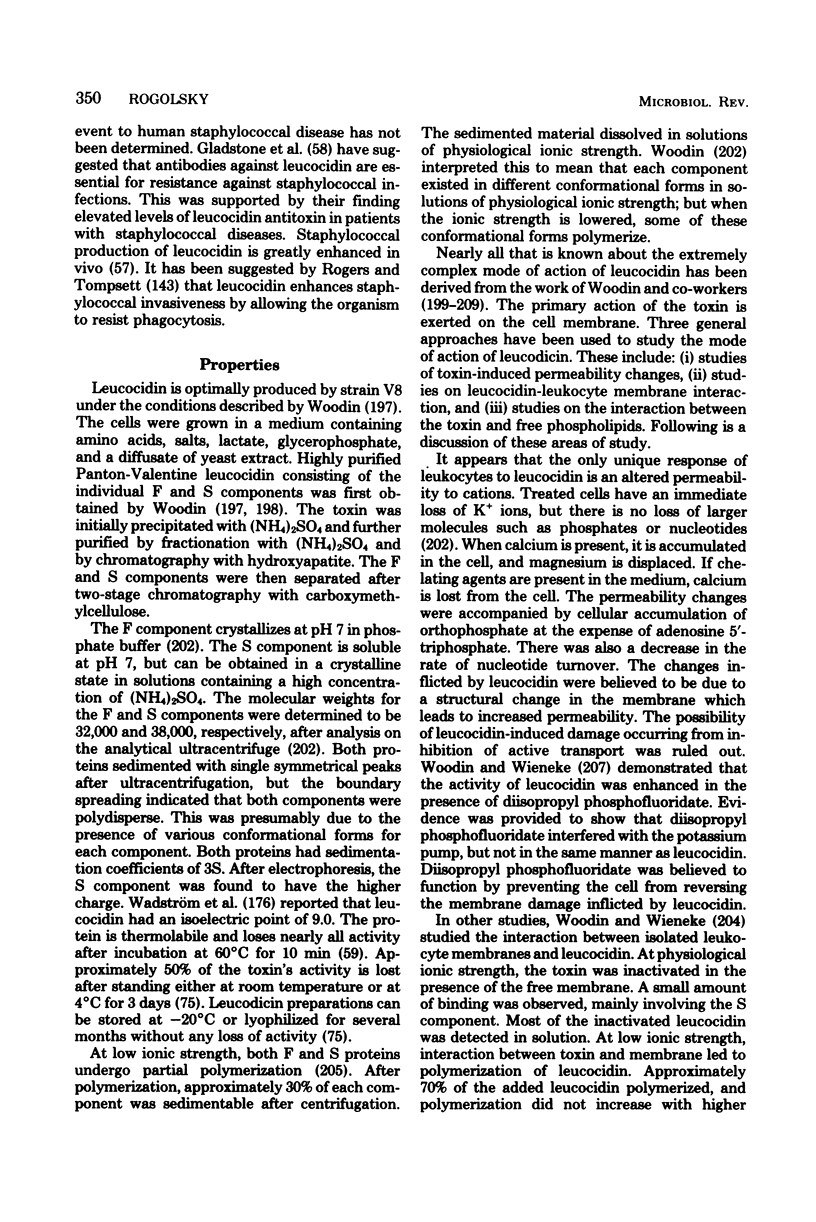
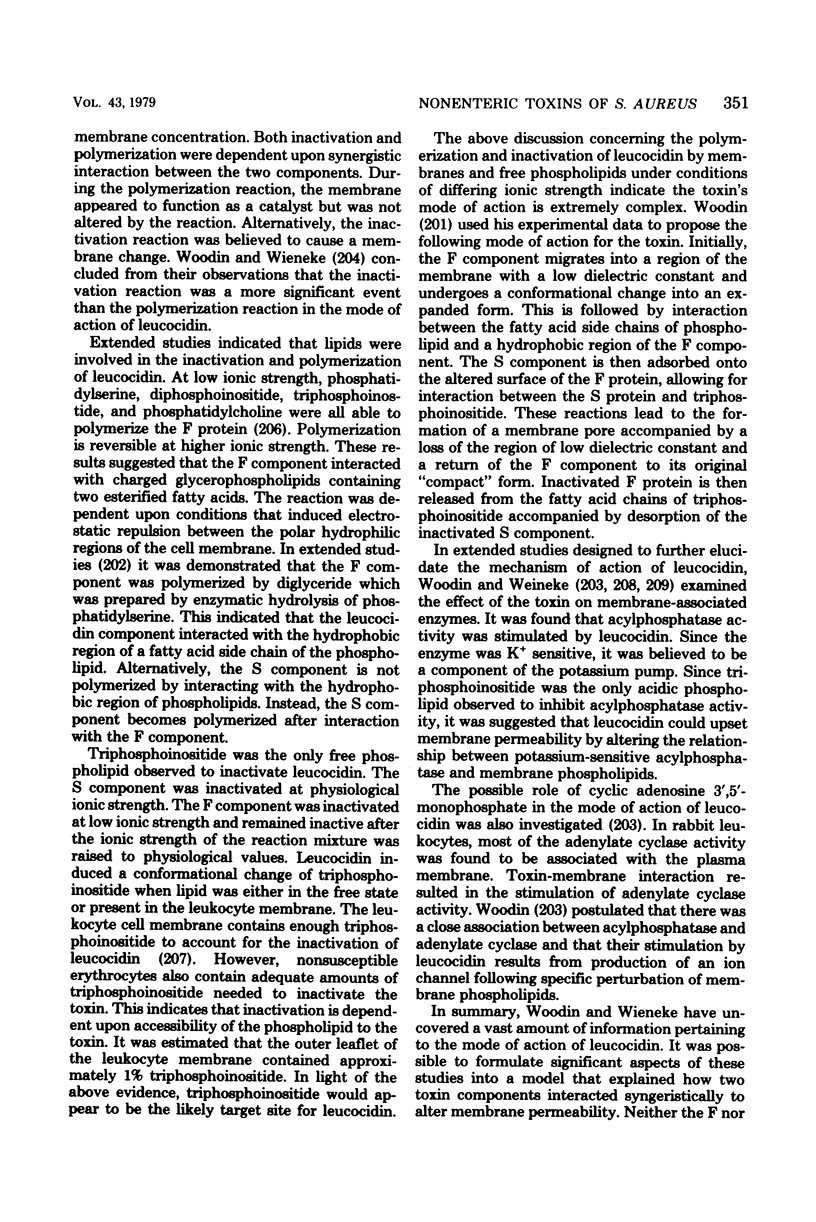
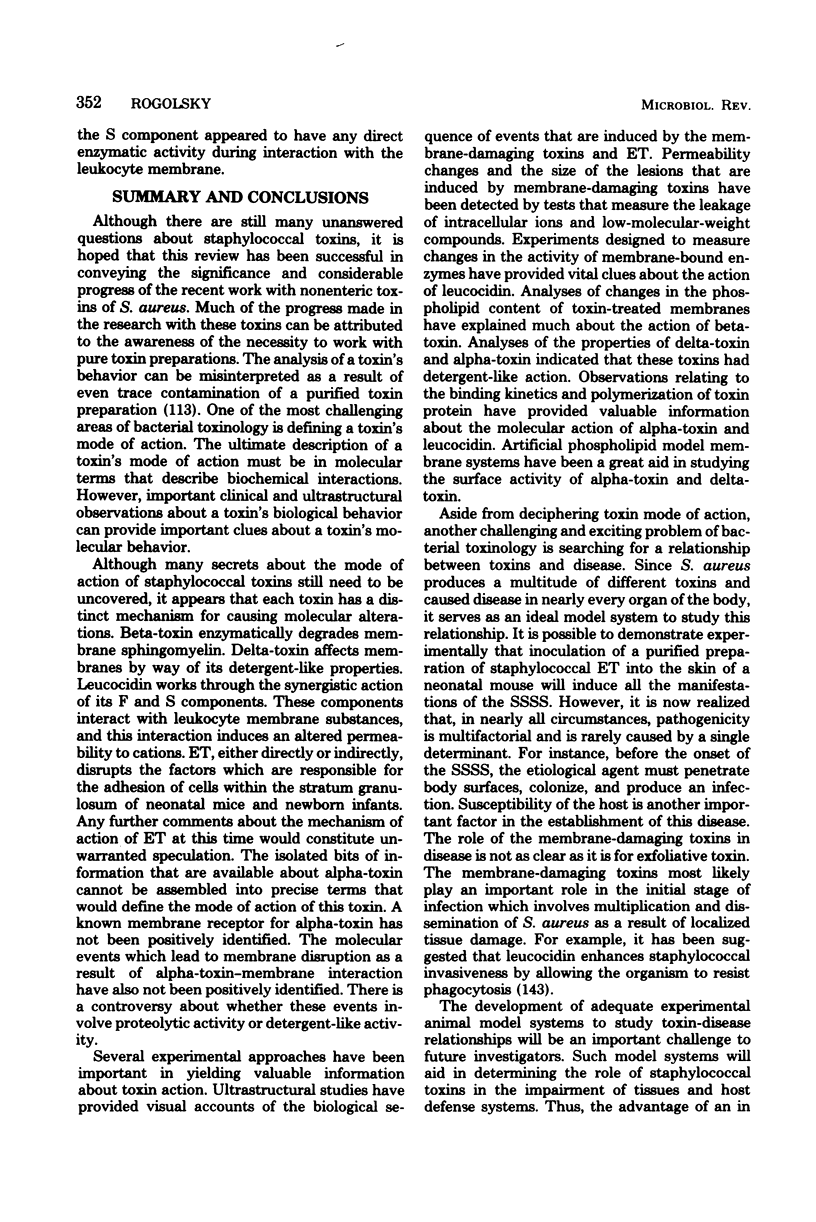
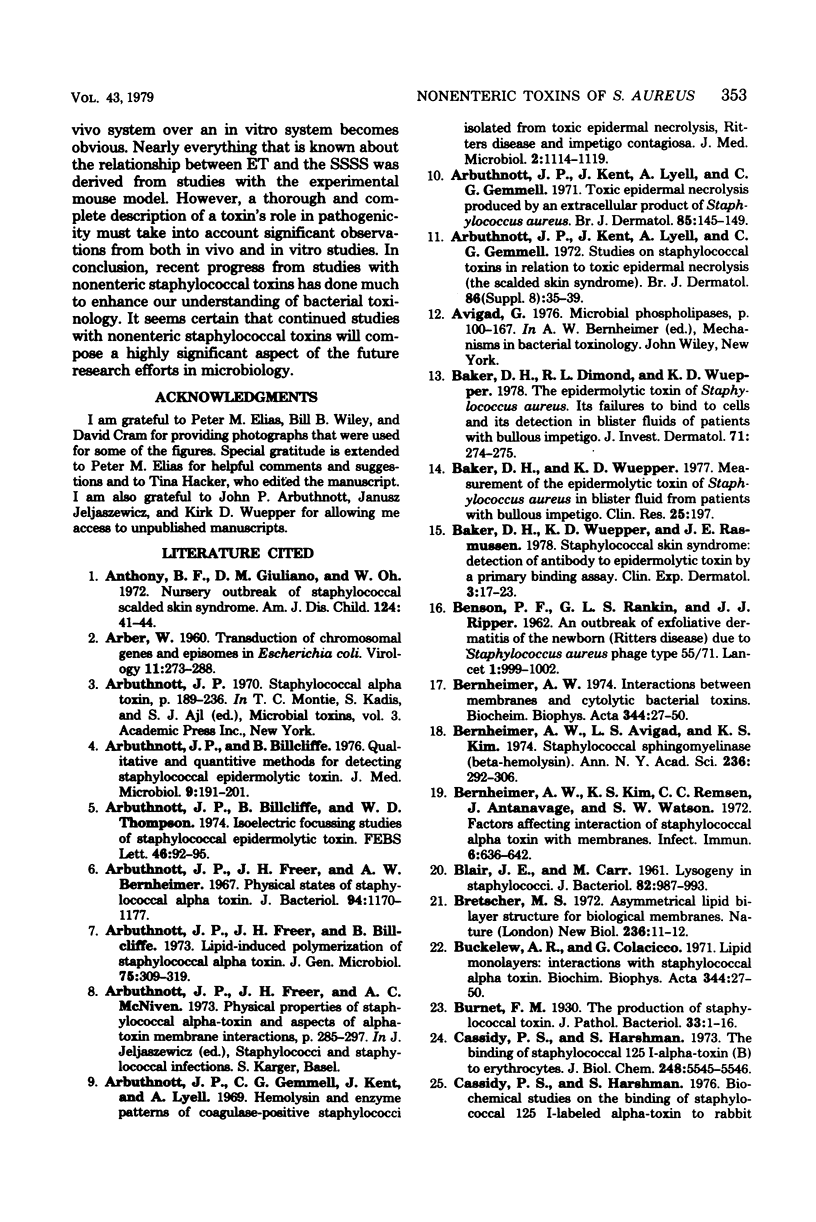
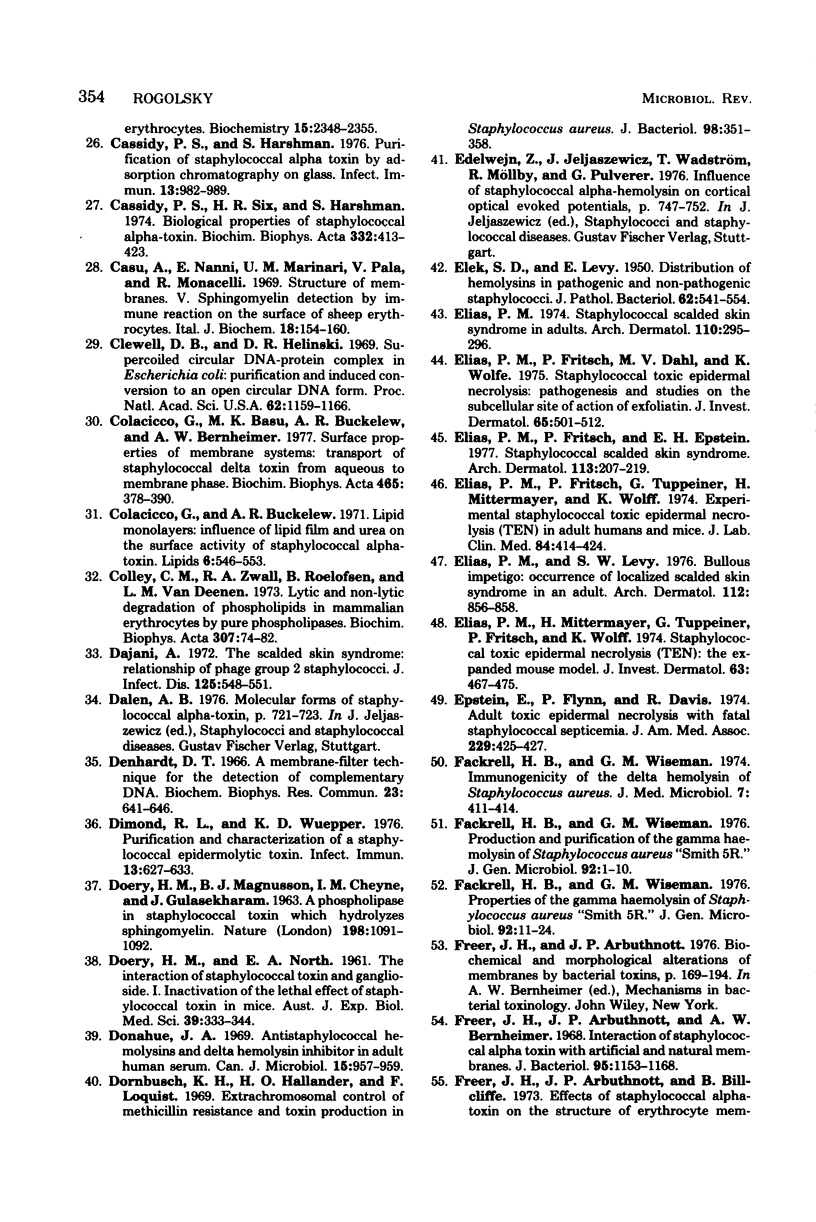
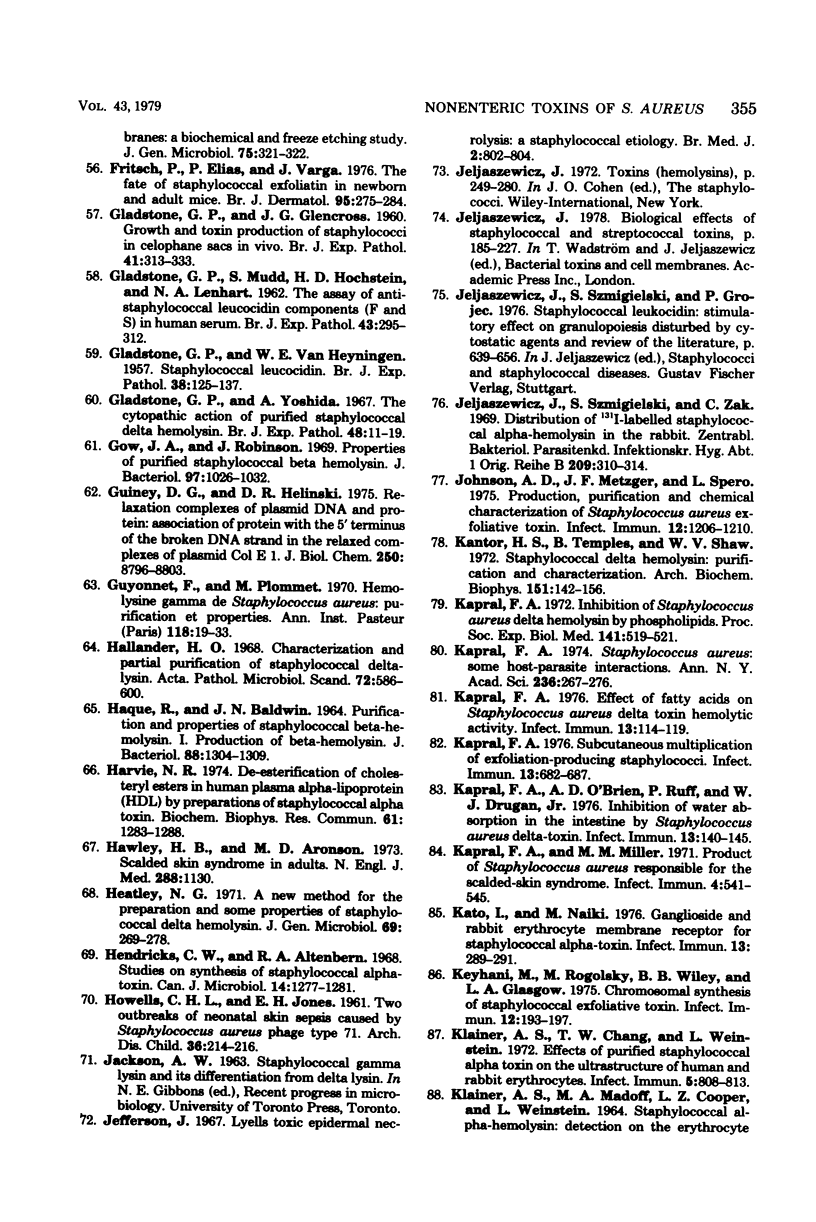
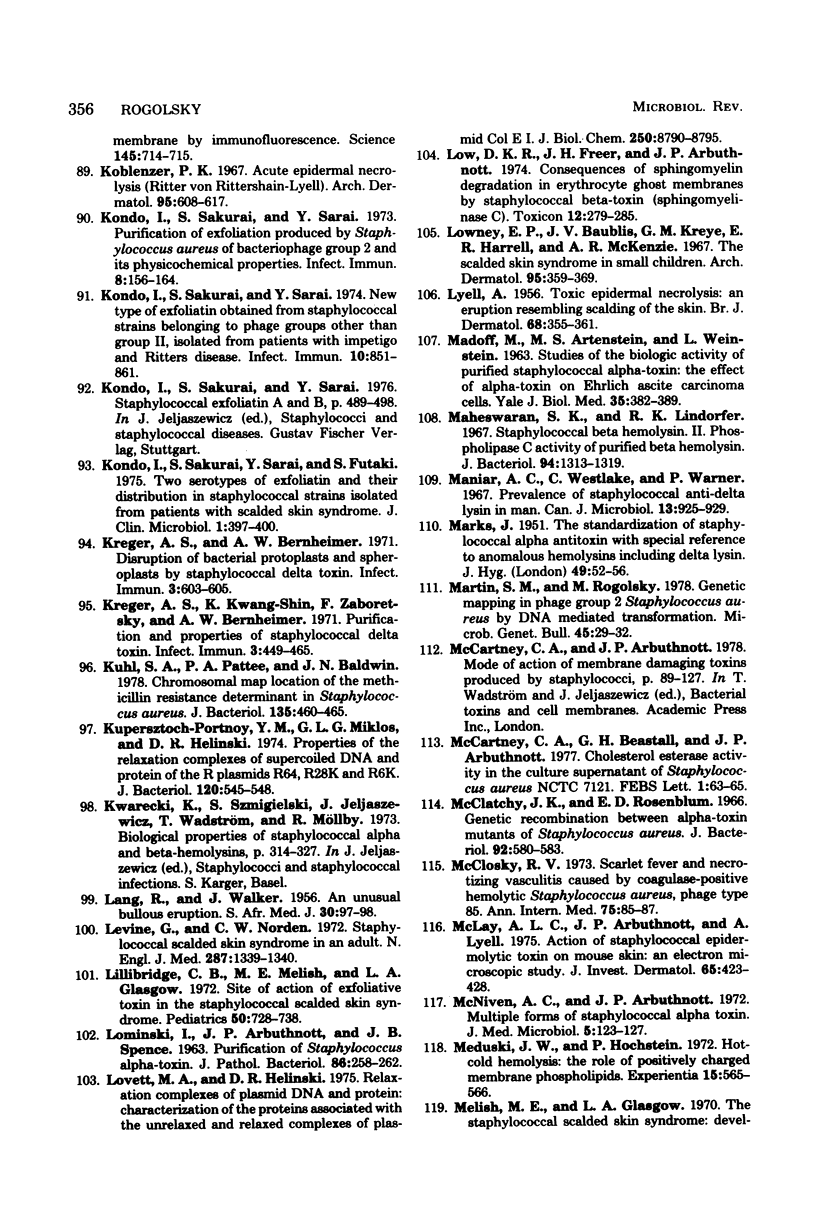
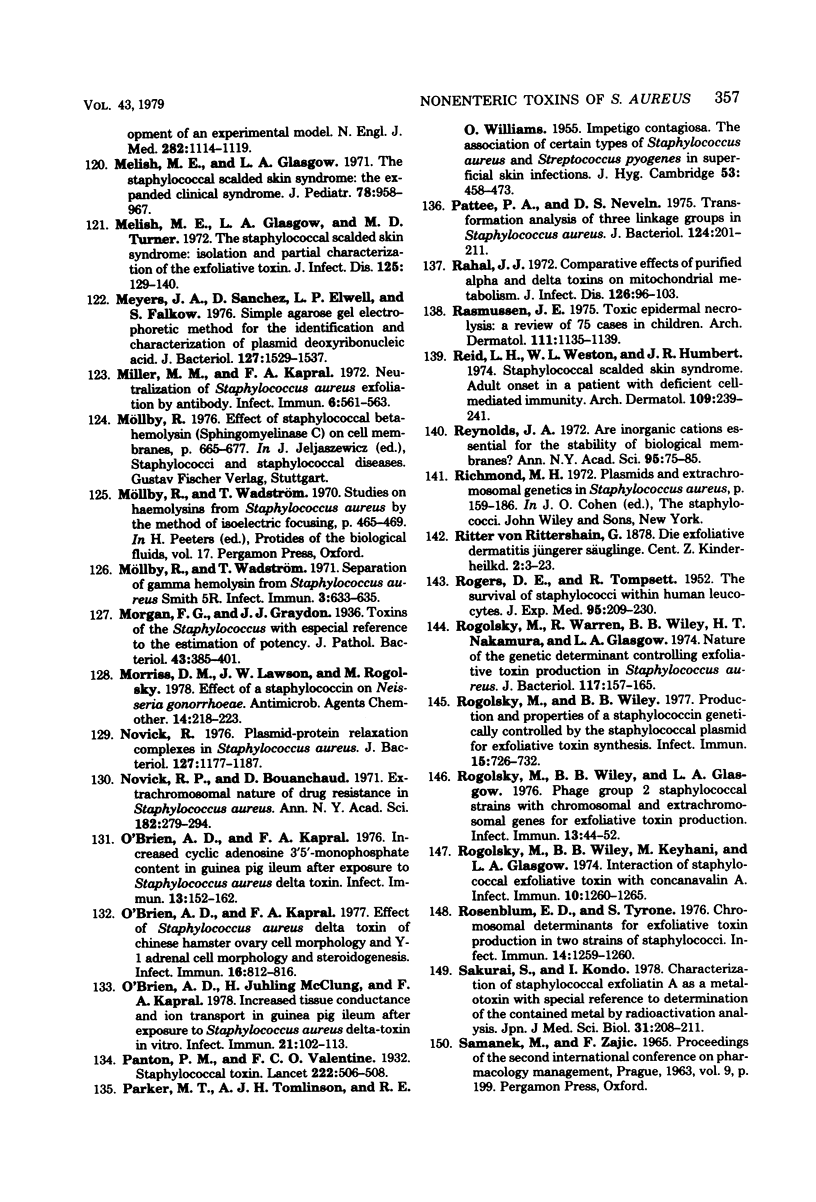
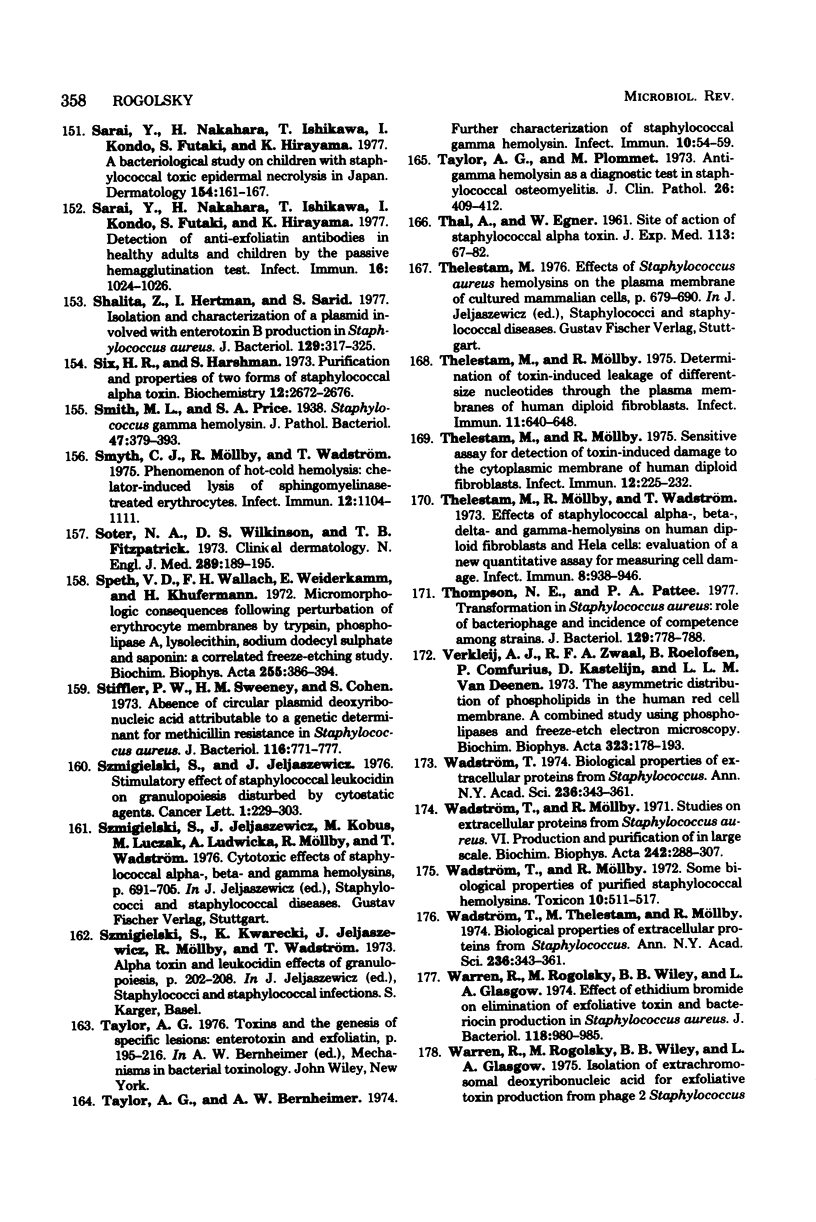
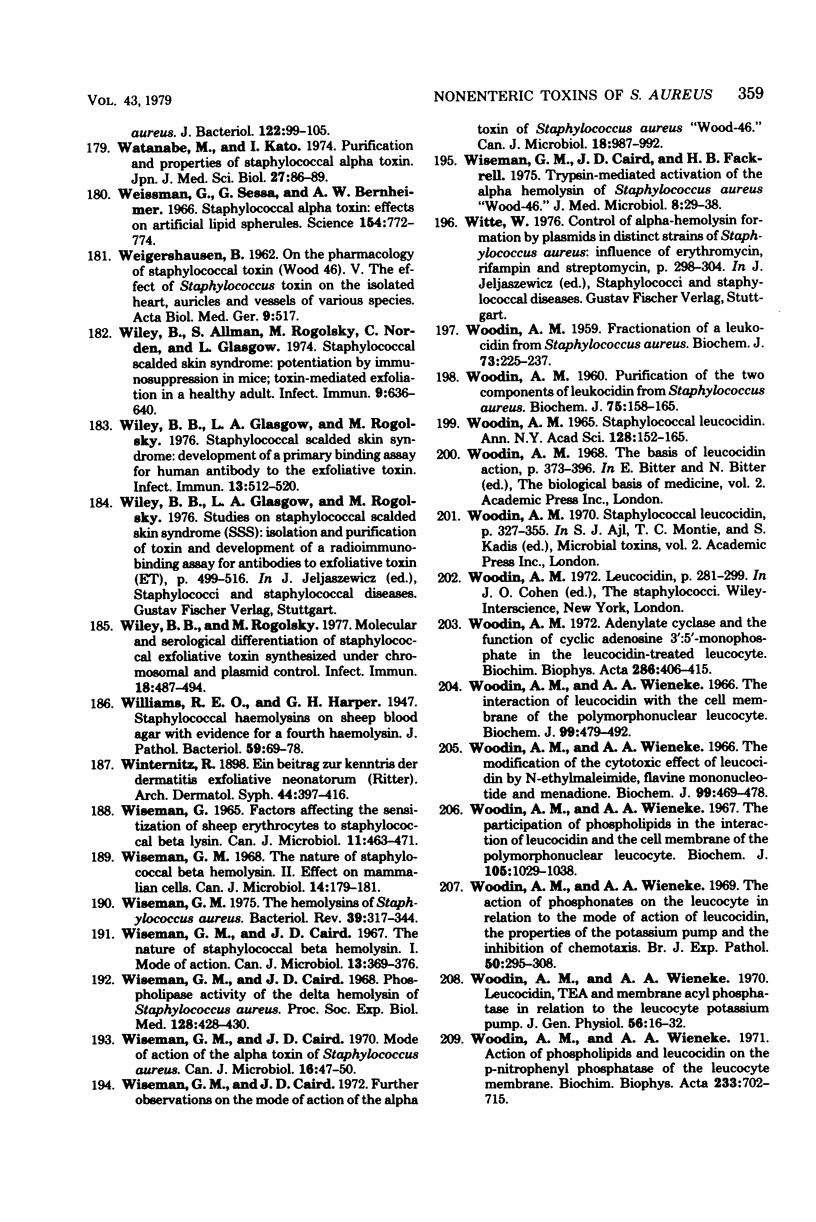
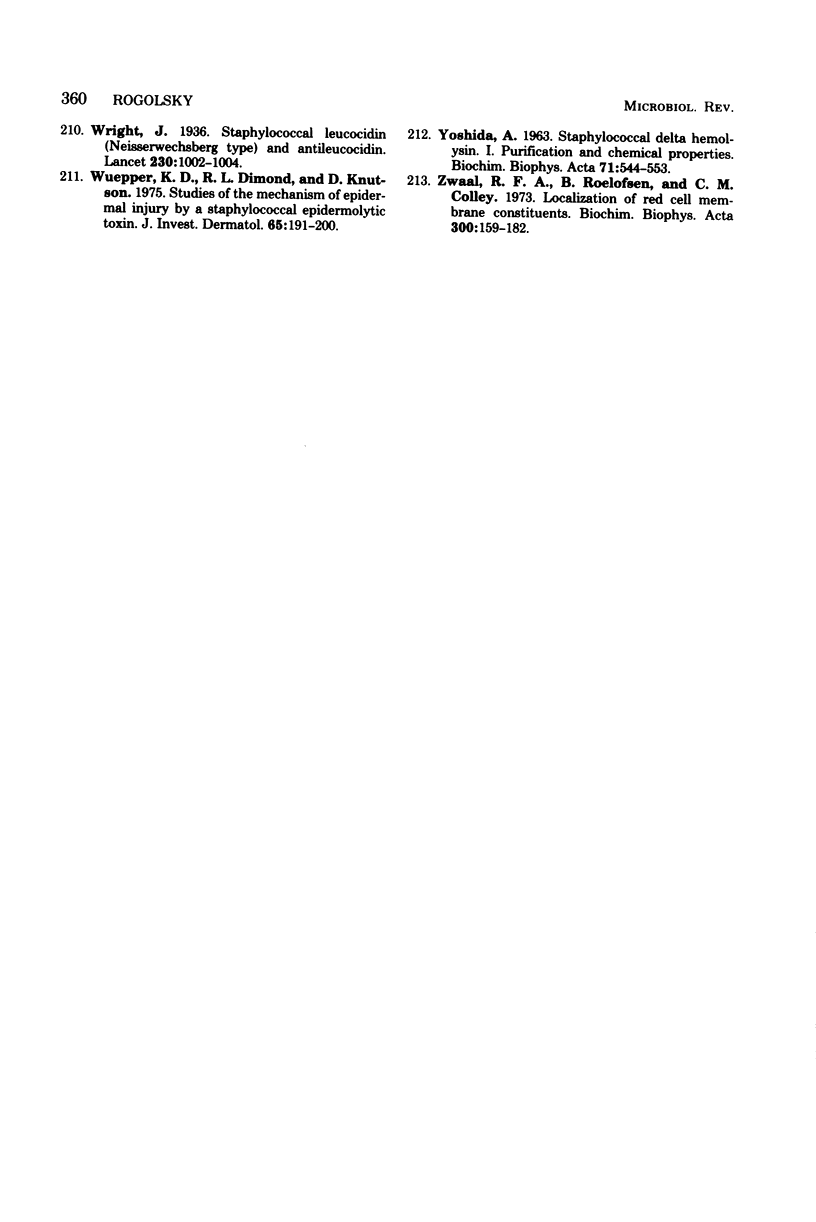
Images in this article
Selected References
These references are in PubMed. This may not be the complete list of references from this article.
- ARBER W. Transduction of chromosomal genes and episomes in Escherichia coli. Virology. 1960 May;11:273–288. doi: 10.1016/0042-6822(60)90066-0. [DOI] [PubMed] [Google Scholar]
- Anthony B. F., Giuliano D. M., Oh W. Nursery outbreak of staphylococcal scalded skin syndrome. Rapid identification of the epidemic bacterial strain. Am J Dis Child. 1972 Jul;124(1):41–44. doi: 10.1001/archpedi.1972.02110130043006. [DOI] [PubMed] [Google Scholar]
- Arbuthnott J. P., Billcliffe B. Qualitative and quantitative methods for detecting staphylococcal epidermolytic toxin. J Med Microbiol. 1976 May;9(2):191–201. doi: 10.1099/00222615-9-2-191. [DOI] [PubMed] [Google Scholar]
- Arbuthnott J. P., Billcliffe B., Thompson W. D. Isoelectric focusing studies of staphylococcal epidermolytic toxin. FEBS Lett. 1974 Sep 15;46(1):92–95. doi: 10.1016/0014-5793(74)80342-x. [DOI] [PubMed] [Google Scholar]
- Arbuthnott J. P., Freer J. H., Bernheimer A. W. Physical states of staphylococcal alpha-toxin. J Bacteriol. 1967 Oct;94(4):1170–1177. doi: 10.1128/jb.94.4.1170-1177.1967. [DOI] [PMC free article] [PubMed] [Google Scholar]
- Arbuthnott J. P., Freer J. H., Billcliffe B. Lipid-induced polymerization of staphylococcal -toxin. J Gen Microbiol. 1973 Apr;75(2):309–319. doi: 10.1099/00221287-75-2-309. [DOI] [PubMed] [Google Scholar]
- Arbuthnott J. P., Freer J. H., McNiven A. C. Physical properties of staphylococcal alpha-toxin and aspects of alpha-toxin membrane interactions. Contrib Microbiol Immunol. 1973;1:285–297. [PubMed] [Google Scholar]
- Arbuthnott J. P., Kent J., Lyell A., Gemmell C. G. Toxic epidermal necrolysis produced by an extracellular product of Staphylococcus aureus. Br J Dermatol. 1971 Aug;85(2):145–149. doi: 10.1111/j.1365-2133.1971.tb07200.x. [DOI] [PubMed] [Google Scholar]
- BENSON P. F., RANKIN G. L., RIPPEY J. J. An outbreak of exfoliative dermatitis of the newborn (Ritter's disease) due to Staphylococcus aureus, phage-type 55/71. Lancet. 1962 May 12;1(7237):999–1002. doi: 10.1016/s0140-6736(62)92036-6. [DOI] [PubMed] [Google Scholar]
- BLAIR J. E., CARR M. Lysogeny in staphylococci. J Bacteriol. 1961 Dec;82:984–993. doi: 10.1128/jb.82.6.984-993.1961. [DOI] [PMC free article] [PubMed] [Google Scholar]
- Baker D. H., Dimond R. L., Wuepper K. D. The epidermolytic toxin of Staphylococcus aureus: its failure to bind to cells and its detection in blister fluids of patients with bullous impetigo. J Invest Dermatol. 1978 Oct;71(4):274–275. doi: 10.1111/1523-1747.ep12515105. [DOI] [PubMed] [Google Scholar]
- Baker D. H., Wuepper K. D., Rasmussen J. E. Staphylococcal scalded skin syndrome: detection of antibody to epidermolytic toxin by a primary binding assay. Clin Exp Dermatol. 1978 Mar;3(1):17–24. doi: 10.1111/j.1365-2230.1978.tb01453.x. [DOI] [PubMed] [Google Scholar]
- Bernheimer A. W., Avigad L. S., Kim K. S. Staphylococcal sphingomyelinase (beta-hemolysin). Ann N Y Acad Sci. 1974 Jul 31;236(0):292–306. doi: 10.1111/j.1749-6632.1974.tb41499.x. [DOI] [PubMed] [Google Scholar]
- Bernheimer A. W., Kim K. S., Remsen C. C., Antanavage J., Watson S. W. Factors affecting interaction of staphylococcal alpha toxin with membranes. Infect Immun. 1972 Oct;6(4):636–642. doi: 10.1128/iai.6.4.636-642.1972. [DOI] [PMC free article] [PubMed] [Google Scholar]
- Bretscher M. S. Asymmetrical lipid bilayer structure for biological membranes. Nat New Biol. 1972 Mar 1;236(61):11–12. doi: 10.1038/newbio236011a0. [DOI] [PubMed] [Google Scholar]
- Cassidy P. S., Harshman S. The binding of staphylococcal 125I-alpha-toxin (B) to erythrocytes. J Biol Chem. 1973 Aug 10;248(15):5545–5546. [PubMed] [Google Scholar]
- Cassidy P., Harshman S. Purification of staphylococcal alpha-toxin by adsorption chromatography on glass. Infect Immun. 1976 Mar;13(3):982–986. doi: 10.1128/iai.13.3.982-986.1976. [DOI] [PMC free article] [PubMed] [Google Scholar]
- Cassidy P., Harshman S. Studies on the binding of staphylococcal 125I-labeled alpha-toxin to rabbit erythrocytes. Biochemistry. 1976 Jun 1;15(11):2348–2355. doi: 10.1021/bi00656a016. [DOI] [PubMed] [Google Scholar]
- Casu A., Nanni G., Marinari U. M., Pala V., Monacelli R. Structure of membrane. V. Sphingomyelin detection by immune reaction on the surface of sheep erythrocytes. Ital J Biochem. 1969 May-Jun;18(3):154–165. [PubMed] [Google Scholar]
- Clewell D. B., Helinski D. R. Supercoiled circular DNA-protein complex in Escherichia coli: purification and induced conversion to an opern circular DNA form. Proc Natl Acad Sci U S A. 1969 Apr;62(4):1159–1166. doi: 10.1073/pnas.62.4.1159. [DOI] [PMC free article] [PubMed] [Google Scholar]
- Colacicco G., Basu M. K., Buckelew A. R., Jr, Bernheimer A. W. Surface properties of membrane systems. Transport of staphylococcal delta-toxin from aqueous to membrane phase. Biochim Biophys Acta. 1977 Mar 1;465(2):378–390. doi: 10.1016/0005-2736(77)90087-6. [DOI] [PubMed] [Google Scholar]
- Colacicco G., Buckelew A. R., Jr Lipid monolayers: influence of lipid film and urea on the surface activity of staphylococcal alpha-toxin. Lipids. 1971 Aug;6(8):546–553. doi: 10.1007/BF02531134. [DOI] [PubMed] [Google Scholar]
- Colley C. M., Zwaal R. F., Roelofsen B., van Deenen L. L. Lytic and non-lytic degradation of phospholipids in mammalian erythrocytes by pure phospholipases. Biochim Biophys Acta. 1973 Apr 25;307(1):74–82. doi: 10.1016/0005-2736(73)90026-6. [DOI] [PubMed] [Google Scholar]
- DOERY H. M., MAGNUSSON B. J., CHEYNE I. M., SULASEKHARAM J. A phospholipase in staphylococcal toxin which hydrolyses sphingomyelin. Nature. 1963 Jun 15;198:1091–1092. doi: 10.1038/1981091a0. [DOI] [PubMed] [Google Scholar]
- DOERY H. M., NORTH E. A. The interaction of staphylococcal toxin and ganglioside. I. Inactivation of the lethal effect of staphylococcal toxin in mice. Aust J Exp Biol Med Sci. 1961 Aug;39:333–344. doi: 10.1038/icb.1961.32. [DOI] [PubMed] [Google Scholar]
- Dajani A. S. The scalded-skin syndrome: relation to phage-group II staphylococci. J Infect Dis. 1972 May;125(5):548–551. doi: 10.1093/infdis/125.5.548. [DOI] [PubMed] [Google Scholar]
- Denhardt D. T. A membrane-filter technique for the detection of complementary DNA. Biochem Biophys Res Commun. 1966 Jun 13;23(5):641–646. doi: 10.1016/0006-291x(66)90447-5. [DOI] [PubMed] [Google Scholar]
- Dimond R. L., Wuepper K. D. Purification and characterization of a staphylococcal epidermolytic toxin. Infect Immun. 1976 Feb;13(2):627–633. doi: 10.1128/iai.13.2.627-633.1976. [DOI] [PMC free article] [PubMed] [Google Scholar]
- Donahue J. A. Antistaphylococcal hemolysins and delta hemolysin inhibitor in adult human serum. Can J Microbiol. 1969 Aug;15(8):957–959. doi: 10.1139/m69-167. [DOI] [PubMed] [Google Scholar]
- Dornbusch K., Hallander H. O., Löfquist F. Extrachromosomal control of methicillin resistance and toxin production in Staphylococcus aureus. J Bacteriol. 1969 May;98(2):351–358. doi: 10.1128/jb.98.2.351-358.1969. [DOI] [PMC free article] [PubMed] [Google Scholar]
- ELEK S. D., LEVY E. Distribution of haemolysins in pathogenic and non-pathogenic staphylococci. J Pathol Bacteriol. 1950 Oct;62(4):541–554. doi: 10.1002/path.1700620405. [DOI] [PubMed] [Google Scholar]
- Elias P. M., Fritsch P., Dahl M. V., Wolff K. Staphylococcal toxic epidermal necrolysis: pathogenesis and studies on the subcellular site of action of exfoliatin. J Invest Dermatol. 1975 Dec;65(6):501–512. doi: 10.1111/1523-1747.ep12610196. [DOI] [PubMed] [Google Scholar]
- Elias P. M., Fritsch P., Epstein E. H. Staphylococcal scalded skin syndrome. Clinical features, pathogenesis, and recent microbiological and biochemical developments. Arch Dermatol. 1977 Feb;113(2):207–219. doi: 10.1001/archderm.113.2.207. [DOI] [PubMed] [Google Scholar]
- Elias P. M., Fritsch P., Tappeiner G., Mittermayer H., Wolff K. Experimental staphylococcal toxic epidermal necrolysis (TEN) in adult humans and mice. J Lab Clin Med. 1974 Sep;84(3):414–424. [PubMed] [Google Scholar]
- Elias P. M. Letter: Staphylococcal scalded skin syndrome in adults. Arch Dermatol. 1974 Aug;110(2):295–296. doi: 10.1001/archderm.1974.01630080083026. [DOI] [PubMed] [Google Scholar]
- Elias P. M., Levy S. W. Bullous impetigo. Occurrence of localized scalded skin syndrome in an adult. Arch Dermatol. 1976 Jun;112(6):856–858. doi: 10.1001/archderm.112.6.856. [DOI] [PubMed] [Google Scholar]
- Elias P. M., Mittermayer H., Tappeiner G., Fritsch P., Wolff K. Staphylococcal toxic epidermal necrolysis (TEN): the expanded mouse model. J Invest Dermatol. 1974 Dec;63(6):467–475. doi: 10.1111/1523-1747.ep12680401. [DOI] [PubMed] [Google Scholar]
- Epstein E. H., Jr, Flynn P., Davis R. S. Adult toxic epidermal necrolysis with fatal staphylococcal septicemia. JAMA. 1974 Jul 22;229(4):425–427. [PubMed] [Google Scholar]
- Fackrell H. B., Wiseman G. M. Immunogenicity of the delta-haemolysin of Staphylococcus aureus. J Med Microbiol. 1974 Nov;7(4):411–414. doi: 10.1099/00222615-7-4-411. [DOI] [PubMed] [Google Scholar]
- Fackrell H. B., Wiseman G. M. Production and purification of the gamma haemolysin of Staphylococcus aureus 'Smith 5R'. J Gen Microbiol. 1976 Jan;92(1):1–10. doi: 10.1099/00221287-92-1-1. [DOI] [PubMed] [Google Scholar]
- Fackrell H. B., Wiseman G. M. Properties of the gamma haemolysin of Staphylococcus aureus 'Smith 5R'. J Gen Microbiol. 1976 Jan;92(1):11–24. doi: 10.1099/00221287-92-1-11. [DOI] [PubMed] [Google Scholar]
- Freer J. H., Arbuthnott J. P., Bernheimer A. W. Interaction of staphylococcal alpha-toxin with artificial and natural membranes. J Bacteriol. 1968 Mar;95(3):1153–1168. doi: 10.1128/jb.95.3.1153-1168.1968. [DOI] [PMC free article] [PubMed] [Google Scholar]
- Fritsch P., Elias P., Varga J. The fate of Staphylococcal exfoliatin in newborn and adult mice. Br J Dermatol. 1976 Sep;95(3):275–284. doi: 10.1111/j.1365-2133.1976.tb07015.x. [DOI] [PubMed] [Google Scholar]
- GLADSTONE G. P., GLENCROSS E. J. Growth and toxin production of staphylococci in cellophane sacs in vivo. Br J Exp Pathol. 1960 Jun;41:313–333. [PMC free article] [PubMed] [Google Scholar]
- GLADSTONE G. P., MUDD S., HOCHSTEIN H. D., LENHART N. A. The assay of anti-staphylococcal leucocidal components (F and S) in human serum. Br J Exp Pathol. 1962 Jun;43:295–312. [PMC free article] [PubMed] [Google Scholar]
- GLADSTONE G. P., VAN HEYNINGEN W. E. Staphylococcal leucocidins. Br J Exp Pathol. 1957 Apr;38(2):123–137. [PMC free article] [PubMed] [Google Scholar]
- Gladstone G. P., Yoshida A. The cytopathic action of purified staphylococcal delta-hemolysin. Br J Exp Pathol. 1967 Feb;48(1):11–19. [PMC free article] [PubMed] [Google Scholar]
- Gow J. A., Robinson J. Properties of purified staphylococcal beta-hemolysin. J Bacteriol. 1969 Mar;97(3):1026–1032. doi: 10.1128/jb.97.3.1026-1032.1969. [DOI] [PMC free article] [PubMed] [Google Scholar]
- Guiney D. G., Helinski D. R. Relaxation complexes of poasmid DNA and protein. III. Association of protein with the 5' terminus of the broken DNA strand in the relaxed complex of plasmid ColE1. J Biol Chem. 1975 Nov 25;250(22):8796–8803. [PubMed] [Google Scholar]
- Guyonnet F., Plommet M. Hémolysine gamma de staphylococcus aureus: purification et propriétés. Ann Inst Pasteur (Paris) 1970 Jan;118(1):19–33. [PubMed] [Google Scholar]
- HAQUE R. U., BALDWIN J. N. PURIFICATION AND PROPERTIES OF STAPHYLOCOCCAL BETA-HEMOLYSIN. I. PRODUCTION OF BETA-HEMOLYSIN. J Bacteriol. 1964 Nov;88:1304–1309. doi: 10.1128/jb.88.5.1304-1309.1964. [DOI] [PMC free article] [PubMed] [Google Scholar]
- HOWELLS C. H., JONES H. E. Two outbreaks of neonatal skin sepsis caused by Staphylococcus aureus, phage type 71. Arch Dis Child. 1961 Apr;36:214–216. doi: 10.1136/adc.36.186.214. [DOI] [PMC free article] [PubMed] [Google Scholar]
- Hallander H. O. Characterization and partial purification of staphylococcal delta-lysin. Acta Pathol Microbiol Scand. 1968;72(4):586–600. doi: 10.1111/j.1699-0463.1968.tb00471.x. [DOI] [PubMed] [Google Scholar]
- Harvie N. R. De-esterification of cholesteryl esters in human plasma alpha-lipoprotein (HDL) by preparations of staphylococcal alpha toxin. Biochem Biophys Res Commun. 1974 Dec 23;61(4):1283–1288. doi: 10.1016/s0006-291x(74)80423-7. [DOI] [PubMed] [Google Scholar]
- Hawley H. B., Aronson M. D. Scalded-skin syndrome in adults. N Engl J Med. 1973 May 24;288(21):1130–1130. doi: 10.1056/NEJM197305242882123. [DOI] [PubMed] [Google Scholar]
- Heatley N. G. A new method for the preparation and some properties of staphylococcal delta-haemolysin. J Gen Microbiol. 1971 Dec;69(2):269–278. doi: 10.1099/00221287-69-2-269. [DOI] [PubMed] [Google Scholar]
- Hendricks C. W., Altenbern R. A. Studies on the synthesis of staphylococcal alpha toxin. Can J Microbiol. 1968 Dec;14(12):1277–1281. doi: 10.1139/m68-214. [DOI] [PubMed] [Google Scholar]
- Jefferson J. Lyell's toxic epidermal necrolysis: a staphylococcal aetiology? Br Med J. 1967 Jun 24;2(5555):802–804. doi: 10.1136/bmj.2.5555.802. [DOI] [PMC free article] [PubMed] [Google Scholar]
- Jeljaszewicz J., Szmigielski S., Zak C. Distribution of 131-I-labelled staphylococcal alpha-hemolysin in the rabbit. Zentralbl Bakteriol Orig. 1969;209(3):310–314. [PubMed] [Google Scholar]
- Johnson A. D., Metzger J. F., Spero L. Production, purification, and chemical characterization of Staphylococcus aureus exfoliative toxin. Infect Immun. 1975 Nov;12(5):1206–1210. doi: 10.1128/iai.12.5.1206-1210.1975. [DOI] [PMC free article] [PubMed] [Google Scholar]
- KLAINER A. S., MADOFF M. A., COOPER L. Z., WEINSTEIN L. STAPHYLOCOCCAL ALPHA-HEMOLYSIN: DETECTION ON THE ERYTHROCYTE MEMBRANE BY IMMUNOFLUORESCENCE. Science. 1964 Aug 14;145(3633):714–715. doi: 10.1126/science.145.3633.714. [DOI] [PubMed] [Google Scholar]
- Kantor H. S., Temples B., Shaw W. V. Staphylococcal delta hemolysin: purification and characterization. Arch Biochem Biophys. 1972 Jul;151(1):142–156. doi: 10.1016/0003-9861(72)90483-3. [DOI] [PubMed] [Google Scholar]
- Kapral F. A. Effect of fatty acids on Staphylococcus aureus delta-toxin hemolytic activity. Infect Immun. 1976 Jan;13(1):114–119. doi: 10.1128/iai.13.1.114-119.1976. [DOI] [PMC free article] [PubMed] [Google Scholar]
- Kapral F. A. Inhibition of Staphylococcus aureus delta hemolysin by phospholipids. Proc Soc Exp Biol Med. 1972 Nov;141(2):519–521. doi: 10.3181/00379727-141-36812. [DOI] [PubMed] [Google Scholar]
- Kapral F. A., Miller M. M. Product of Staphylococcus aureus responsible for the scalded-skin syndrome. Infect Immun. 1971 Nov;4(5):541–545. doi: 10.1128/iai.4.5.541-545.1971. [DOI] [PMC free article] [PubMed] [Google Scholar]
- Kapral F. A., O'Brien A. D., Ruff P. D., Drugan W. J., Jr Inhibition of water absorption in the intestine by Staphylococcus aureus delta-toxin. Infect Immun. 1976 Jan;13(1):140–145. doi: 10.1128/iai.13.1.140-145.1976. [DOI] [PMC free article] [PubMed] [Google Scholar]
- Kapral F. A. Staphylococcus aureus: some host-parasite interactions. Ann N Y Acad Sci. 1974 Jul 31;236(0):267–276. doi: 10.1111/j.1749-6632.1974.tb41497.x. [DOI] [PubMed] [Google Scholar]
- Kapral F. A. Subcutaneous multiplication of exfoliatin-producing staphylococci. Infect Immun. 1976 Mar;13(3):682–687. doi: 10.1128/iai.13.3.682-687.1976. [DOI] [PMC free article] [PubMed] [Google Scholar]
- Kato I., Naiki M. Ganglioside and rabbit erythrocyte membrane receptor for staphylococcal alpha-toxin. Infect Immun. 1976 Jan;13(1):289–291. doi: 10.1128/iai.13.1.289-291.1976. [DOI] [PMC free article] [PubMed] [Google Scholar]
- Keyhani M., Rogolsky M., Wiley B. B., Glasgow L. A. Chromosomal synthesis of staphylococcal exfoliative toxin. Infect Immun. 1975 Jul;12(1):193–197. doi: 10.1128/iai.12.1.193-197.1975. [DOI] [PMC free article] [PubMed] [Google Scholar]
- Klainer A. S., Chang T. W., Weinstein L. Effects of purified staphylococcal alpha toxin on the ultrastructure of human and rabbit erythrocytes. Infect Immun. 1972 May;5(5):808–813. doi: 10.1128/iai.5.5.808-813.1972. [DOI] [PMC free article] [PubMed] [Google Scholar]
- Koblenzer P. J. Acute epidermal necrolysis (Ritter von Rittershain-Lyell). A clinicopathologic study. Arch Dermatol. 1967 Jun;95(6):608–617. [PubMed] [Google Scholar]
- Kondo I., Sakurai S., Sarai Y., Futaki S. Two serotypes of exfoliatin and their distribution in staphylococcal strains isolated from patients with scalded skin syndrome. J Clin Microbiol. 1975 May;1(5):397–400. doi: 10.1128/jcm.1.5.397-400.1975. [DOI] [PMC free article] [PubMed] [Google Scholar]
- Kondo I., Sakurai S., Sarai Y. New type of exfoliatin obtained from staphylococcal strains, belonging to phage groups other than group II, isolated from patients with impetigo and Ritter's disease. Infect Immun. 1974 Oct;10(4):851–861. doi: 10.1128/iai.10.4.851-861.1974. [DOI] [PMC free article] [PubMed] [Google Scholar]
- Kondo I., Sakurai S., Sarai Y. Purification of exfoliatin produced by Staphylococcus aureus of bacteriophage group 2 and its physicochemical properties. Infect Immun. 1973 Aug;8(2):156–164. doi: 10.1128/iai.8.2.156-164.1973. [DOI] [PMC free article] [PubMed] [Google Scholar]
- Kreger A. S., Bernheimer A. W. Disruption of bacterial protoplasts and spheroplasts by staphylococcal delta hemolysin. Infect Immun. 1971 Apr;3(4):603–605. doi: 10.1128/iai.3.4.603-605.1971. [DOI] [PMC free article] [PubMed] [Google Scholar]
- Kreger A. S., Kim K. S., Zaboretzky F., Bernheimer A. W. Purification and properties of staphylococcal delta hemolysin. Infect Immun. 1971 Mar;3(3):449–465. doi: 10.1128/iai.3.3.449-465.1971. [DOI] [PMC free article] [PubMed] [Google Scholar]
- Kupersztoch-Portnoy Y. M., Miklos G. L., Helinski D. R. Properties of the relaxation complexes of supercoiled deoxyribonucleic acid and protein of the R plasmids R64, R28K, and R6K. J Bacteriol. 1974 Oct;120(1):545–548. doi: 10.1128/jb.120.1.545-548.1974. [DOI] [PMC free article] [PubMed] [Google Scholar]
- Kwarecki K., Szmigielski S., Jelijaszewicz J., Wadström T., Möllby R. Biological properties of staphylococcal alpha- and beta-hemolysins. Contrib Microbiol Immunol. 1973;1:314–327. [PubMed] [Google Scholar]
- LANG R., WALKER J. An unusual bullous eruption. S Afr Med J. 1956 Feb 4;30(5):97–98. [PubMed] [Google Scholar]
- LYELL A. Toxic epidermal necrolysis: an eruption resembling scalding of the skin. Br J Dermatol. 1956 Nov;68(11):355–361. doi: 10.1111/j.1365-2133.1956.tb12766.x. [DOI] [PubMed] [Google Scholar]
- Levine G., Norden C. W. Staphylococcal scalded-skin syndrome in an adult. N Engl J Med. 1972 Dec 28;287(26):1339–1340. doi: 10.1056/NEJM197212282872608. [DOI] [PubMed] [Google Scholar]
- Lillibridge C. B., Melish M. E., Glasgow L. A. Site of action of exfoliative toxin in the staphylococcal scaled-skin syndrome. Pediatrics. 1972 Nov;50(5):728–738. [PubMed] [Google Scholar]
- Lovett M. A., Helinski D. R. Relaxation complexes of plasmid DNA and protein. II. Characterization of the proteins associated with the unrelaxed and relaxed complexes of plasmid ColE1. J Biol Chem. 1975 Nov 25;250(22):8790–8795. [PubMed] [Google Scholar]
- Low D. K., Freer J. H., Arbuthnott J. P., Möllby R., Wadström T. Consequences of spingomyelin degradation in erythrocyte ghost membranes by staphylococcal beta-toxin (sphingomyelinase C). Toxicon. 1974 May;12(3):279–285. doi: 10.1016/0041-0101(74)90070-1. [DOI] [PubMed] [Google Scholar]
- Lowney E. D., Baublis J. V., Kreye G. M., Harrell E. R., McKenzie A. R. The scalded skin syndrome in small children. Arch Dermatol. 1967 Apr;95(4):359–369. [PubMed] [Google Scholar]
- Madoff M. A., Artenstein M. S., Weinstein L. Studies of the Biologic Activity of Purified Staphylococcal Alpha-Toxin: II. The Effect of Alpha-Toxin on Ehrlich Ascites Carcinoma Cells. Yale J Biol Med. 1963 Apr;35(5):382–389. [PMC free article] [PubMed] [Google Scholar]
- Maheswaran S. K., Lindorfer R. K. Staphylococcal beta-hemolysin. II. Phospholipase C activity of purified beta-hemolysin. J Bacteriol. 1967 Nov;94(5):1313–1319. doi: 10.1128/jb.94.5.1313-1319.1967. [DOI] [PMC free article] [PubMed] [Google Scholar]
- Maniar A. C., Weslake C., Warner P. Prevalence of staphylococcal anti-delta lysin in man. Can J Microbiol. 1967 Aug;13(8):925–929. doi: 10.1139/m67-124. [DOI] [PubMed] [Google Scholar]
- McClatchy J. K., Rosenblum E. D. Genetic recombination between alpha-toxin mutants of Staphylococcus aureus. J Bacteriol. 1966 Sep;92(3):580–583. doi: 10.1128/jb.92.3.580-583.1966. [DOI] [PMC free article] [PubMed] [Google Scholar]
- McLay A. L., Arbuthnott J. P., Lyell A. Action of staphylococcal epidermolytic toxin on mouse skin: an electron microscopic study. J Invest Dermatol. 1975 Nov;65(5):423–428. doi: 10.1111/1523-1747.ep12608171. [DOI] [PubMed] [Google Scholar]
- McNiven A. C., Arbuthnott J. P. Cell-associated alpha-toxin from Staphylococcus aureus. J Med Microbiol. 1972 Feb;5(1):123–127. doi: 10.1099/00222615-5-1-123. [DOI] [PubMed] [Google Scholar]
- Meduski J. W., Hochstein P. Hot-cold hemolysis: the role of positively charged membrane phospholipids. Experientia. 1972 May 15;28(5):565–566. doi: 10.1007/BF01931879. [DOI] [PubMed] [Google Scholar]
- Melish M. E., Glasgow L. A. Staphylococcal scalded skin syndrome: the expanded clinical syndrome. J Pediatr. 1971 Jun;78(6):958–967. doi: 10.1016/s0022-3476(71)80425-0. [DOI] [PubMed] [Google Scholar]
- Melish M. E., Glasgow L. A., Turner M. D. The staphylococcal scalded-skin syndrome: isolation and partial characterization of the exfoliative toxin. J Infect Dis. 1972 Feb;125(2):129–140. doi: 10.1093/infdis/125.2.129. [DOI] [PubMed] [Google Scholar]
- Meyers J. A., Sanchez D., Elwell L. P., Falkow S. Simple agarose gel electrophoretic method for the identification and characterization of plasmid deoxyribonucleic acid. J Bacteriol. 1976 Sep;127(3):1529–1537. doi: 10.1128/jb.127.3.1529-1537.1976. [DOI] [PMC free article] [PubMed] [Google Scholar]
- Miller M. M., Kapral F. A. Neutralization of Staphylococcus aureus exfoliatin by antibody. Infect Immun. 1972 Oct;6(4):561–563. doi: 10.1128/iai.6.4.561-563.1972. [DOI] [PMC free article] [PubMed] [Google Scholar]
- Morriss D. M., Lawson J. W., Rogolsky M. Effect of a staphylococcin on Neisseria gonorrhoeae. Antimicrob Agents Chemother. 1978 Aug;14(2):218–223. doi: 10.1128/aac.14.2.218. [DOI] [PMC free article] [PubMed] [Google Scholar]
- Möllby R., Wadström T. Separation of Gamma Hemolysin from Staphylococcus aureus Smith 5R. Infect Immun. 1971 Apr;3(4):633–635. doi: 10.1128/iai.3.4.633-635.1971. [DOI] [PMC free article] [PubMed] [Google Scholar]
- Novick R. P., Bouanchaud D. The problems of drug-resistant pathogenic bacteria. Extrachromosomal nature of drug resistance in Staphylococcus aureus. Ann N Y Acad Sci. 1971 Jun 11;182:279–294. doi: 10.1111/j.1749-6632.1971.tb30664.x. [DOI] [PubMed] [Google Scholar]
- Novick R. Plasmid-protein relaxation complexes in Staphylococcus aureus. J Bacteriol. 1976 Sep;127(3):1177–1187. doi: 10.1128/jb.127.3.1177-1187.1976. [DOI] [PMC free article] [PubMed] [Google Scholar]
- O'Brien A. D., Kapral F. A. Effect of Staphylococcus aureus delta toxin on Chinese hamster ovary cell morphology and Y-1 adrenal cell morphology and steroidogenesis. Infect Immun. 1977 Jun;16(3):812–816. doi: 10.1128/iai.16.3.812-816.1977. [DOI] [PMC free article] [PubMed] [Google Scholar]
- O'Brien A. D., Kapral F. A. Increased cyclic adenosine 3',5'-monophosphate content in guinea pig ileum after exposure to Staphylococcus aureus delta-toxin. Infect Immun. 1976 Jan;13(1):152–162. doi: 10.1128/iai.13.1.152-162.1976. [DOI] [PMC free article] [PubMed] [Google Scholar]
- O'Brien A. D., McClung H. J., Kapral F. A. Increased tissue conductance and ion transport in guinea pig ileum after exposure to Staphylococcus aureus delta-toxin in vitro. Infect Immun. 1978 Jul;21(1):102–113. doi: 10.1128/iai.21.1.102-113.1978. [DOI] [PMC free article] [PubMed] [Google Scholar]
- PARKER M. T., TOMLINSON A. J., WILLIAMS R. E. Impetigo contagiosa; the association of certain types of Staphylococcus aureus and of Streptococcus pyogenes with superficial skin infections. J Hyg (Lond) 1955 Dec;53(4):458–473. doi: 10.1017/s0022172400000966. [DOI] [PMC free article] [PubMed] [Google Scholar]
- Pattee P. A., Neveln D. S. Transformation analysis of three linkage groups in Staphylococcus aureus. J Bacteriol. 1975 Oct;124(1):201–211. doi: 10.1128/jb.124.1.201-211.1975. [DOI] [PMC free article] [PubMed] [Google Scholar]
- ROGERS D. E., TOMPSETT R. The survival of staphylococci within human leukocytes. J Exp Med. 1952 Feb;95(2):209–230. doi: 10.1084/jem.95.2.209. [DOI] [PMC free article] [PubMed] [Google Scholar]
- Rahal J. J., Jr Comparative effects of purified staphylococcal alpha and delta toxins on mitochondrial metabolism. J Infect Dis. 1972 Jul;126(1):96–103. doi: 10.1093/infdis/126.1.96. [DOI] [PubMed] [Google Scholar]
- Rasmussen J. E. Toxic epidermal necrolysis. A review of 75 cases in children. Arch Dermatol. 1975 Sep;111(9):1135–1139. doi: 10.1001/archderm.111.9.1135. [DOI] [PubMed] [Google Scholar]
- Reid L. H., Weston W. L., Humbert J. R. Staphylococcal scalded skin syndrome. Adult onset in a patient with deficient cell-mediated immunity. Arch Dermatol. 1974 Feb;109(2):239–241. doi: 10.1001/archderm.109.2.239. [DOI] [PubMed] [Google Scholar]
- Reynolds J. A. Are inorganic cations esential for the stability of biological membranes? Ann N Y Acad Sci. 1972 Jun 20;195:75–85. [PubMed] [Google Scholar]
- Rogolsky M., Warren R., Wiley B. B., Nakamura H. T., Glasgow L. A. Nature of the genetic determinant controlling exfoliative toxin production in Staphylococcus aureus. J Bacteriol. 1974 Jan;117(1):157–165. doi: 10.1128/jb.117.1.157-165.1974. [DOI] [PMC free article] [PubMed] [Google Scholar]
- Rogolsky M., Wiley B. B., Glasgow L. A. Phage group II staphylococcal strains with chromosomal and extrachromosomal genes for exfoliative toxin production. Infect Immun. 1976 Jan;13(1):44–52. doi: 10.1128/iai.13.1.44-52.1976. [DOI] [PMC free article] [PubMed] [Google Scholar]
- Rogolsky M., Wiley B. B., Keyhani M., Glasgow L. A. Interaction of staphylococcal exfoliative toxin with concanavalin A. Infect Immun. 1974 Dec;10(6):1260–1265. doi: 10.1128/iai.10.6.1260-1265.1974. [DOI] [PMC free article] [PubMed] [Google Scholar]
- Rogolsky M., Wiley B. B. Production and properties of a staphylococcin genetically controlled by the staphylococcal plasmid for exfoliative toxin synthesis. Infect Immun. 1977 Mar;15(3):726–732. doi: 10.1128/iai.15.3.726-732.1977. [DOI] [PMC free article] [PubMed] [Google Scholar]
- Rosenblum E. D., Tyrone S. Chromosomal determinants for exfoliative toxin production in two strains of staphylococci. Infect Immun. 1976 Nov;14(5):1259–1260. doi: 10.1128/iai.14.5.1259-1260.1976. [DOI] [PMC free article] [PubMed] [Google Scholar]
- Sakurai S., Kondo I. Characterization of staphylococcal exfoliatin A as a metallotoxin, with special reference to determination of the contained metal by radioactivation analysis [proceedings]. Jpn J Med Sci Biol. 1978 Apr;31(2):208–211. [PubMed] [Google Scholar]
- Sarai Y., Nakahara H., Ishikawa T., Kondo I., Futaki S. A bacteriological study on children with staphylococcal toxic epidermal necrolysis in Japan. Dermatologica. 1977;154(3):161–167. doi: 10.1159/000251125. [DOI] [PubMed] [Google Scholar]
- Sarai Y., Nakahara H., Ishikawa T., Kondo I., Futaki S. Detection of anti-exfoliatin antibodies in healthy adults and children by the passive hemagglutination test. Infect Immun. 1977 Jun;16(3):1024–1026. doi: 10.1128/iai.16.3.1024-1026.1977. [DOI] [PMC free article] [PubMed] [Google Scholar]
- Shalita Z., Hertman I., Sarid S. Isolation and characterization of a plasmid involved with enterotoxin B production in Staphylococcus aureus. J Bacteriol. 1977 Jan;129(1):317–325. doi: 10.1128/jb.129.1.317-325.1977. [DOI] [PMC free article] [PubMed] [Google Scholar]
- Six H. R., Harshman S. Purification and properties of two forms of staphylococcal toxin. Biochemistry. 1973 Jul 3;12(14):2672–2677. doi: 10.1021/bi00738a019. [DOI] [PubMed] [Google Scholar]
- Smyth C. J., Möllby R., Wadström T. Phenomenon of hot-cold hemolysis: chelator-induced lysis of sphingomyelinase-treated erythrocytes. Infect Immun. 1975 Nov;12(5):1104–1111. doi: 10.1128/iai.12.5.1104-1111.1975. [DOI] [PMC free article] [PubMed] [Google Scholar]
- Soter N. A., Wilkinson D. S., Fitzpatrick T. B. Clinical dermatology. 1. N Engl J Med. 1973 Jul 26;289(4):189–195. doi: 10.1056/NEJM197307262890406. [DOI] [PubMed] [Google Scholar]
- Speth V., Wallach D. F., Weidekamm E., Knüfermann H. Micromorphologic consequences following perturbation of erythrocyte membranes by trypsin, phospholipase A, lysolecithin, sodium dodecyl sulfate and saponin. A correlated freeze-etching and biochemical study. Biochim Biophys Acta. 1972 Jan 17;255(1):386–394. doi: 10.1016/0005-2736(72)90037-5. [DOI] [PubMed] [Google Scholar]
- Stiffler P. W., Sweeney H. M., Cohen S. Absence of circular plasmid deoxyribonucleic acid attributable to a genetic determinant for methicillin resistance in Staphylococcus aureus. J Bacteriol. 1973 Nov;116(2):771–777. doi: 10.1128/jb.116.2.771-777.1973. [DOI] [PMC free article] [PubMed] [Google Scholar]
- THAL A. P., EGNER W. The site of action of the Staphylococcus alpha toxin. J Exp Med. 1961 Jan 1;113:67–82. doi: 10.1084/jem.113.1.67. [DOI] [PMC free article] [PubMed] [Google Scholar]
- Taylor A. G., Bernheimer A. W. Further characterization of staphylococcal gamma-hemolysin. Infect Immun. 1974 Jul;10(1):54–59. doi: 10.1128/iai.10.1.54-59.1974. [DOI] [PMC free article] [PubMed] [Google Scholar]
- Taylor A. G., Plommet M. Anti-gamma haemolysin as a diagnostic test in staphylococcal osteomyelitis. J Clin Pathol. 1973 Jun;26(6):409–412. doi: 10.1136/jcp.26.6.409. [DOI] [PMC free article] [PubMed] [Google Scholar]
- Thelestam M., Möllby R. Determination of toxin-induced leakage of different-size nucleotides through the plasma membrane of human diploid fibroblasts. Infect Immun. 1975 Apr;11(4):640–648. doi: 10.1128/iai.11.4.640-648.1975. [DOI] [PMC free article] [PubMed] [Google Scholar]
- Thelestam M., Möllby R. Sensitive assay for detection of toxin-induced damage to the cytoplasmic membrane of human diploid fibroblasts. Infect Immun. 1975 Aug;12(2):225–232. doi: 10.1128/iai.12.2.225-232.1975. [DOI] [PMC free article] [PubMed] [Google Scholar]
- Thelestam M., Möllby R., Wadström T. Effects of staphylococcal alpha-, beta-, delta-, and gamma-hemolysins on human diploid fibroblasts and HeLa cells: evaluation of a new quantitative as say for measuring cell damage. Infect Immun. 1973 Dec;8(6):938–946. doi: 10.1128/iai.8.6.938-946.1973. [DOI] [PMC free article] [PubMed] [Google Scholar]
- Thompson N. E., Pattee P. A. Transformation in Staphylococcus aureus: role of bacteriophage and incidence of competence among strains. J Bacteriol. 1977 Feb;129(2):778–788. doi: 10.1128/jb.129.2.778-788.1977. [DOI] [PMC free article] [PubMed] [Google Scholar]
- Verkleij A. J., Zwaal R. F., Roelofsen B., Comfurius P., Kastelijn D., van Deenen L. L. The asymmetric distribution of phospholipids in the human red cell membrane. A combined study using phospholipases and freeze-etch electron microscopy. Biochim Biophys Acta. 1973 Oct 11;323(2):178–193. doi: 10.1016/0005-2736(73)90143-0. [DOI] [PubMed] [Google Scholar]
- WIEGERSHAUSEN B. [On the pharmacology of staphylococcal toxin (Wood 46). V. The effect of staphylococcal toxin on the isolated heart, auricles and vessels of various species]. Acta Biol Med Ger. 1962;9:517–533. [PubMed] [Google Scholar]
- WISEMAN G. M. FACTORS AFFECTING THE SENSITIZATION OF SHEEP ERYTHROCYTES TO STAPHYLOCOCCAL BETA LYSIN. Can J Microbiol. 1965 Jun;11:463–471. doi: 10.1139/m65-061. [DOI] [PubMed] [Google Scholar]
- WOODIN A. M. Fractionation of a leucocidin from Staphylococcus aureus. Biochem J. 1959 Oct;73:225–237. doi: 10.1042/bj0730225. [DOI] [PMC free article] [PubMed] [Google Scholar]
- WOODIN A. M. Purification of the two components of leucocidin from Staphylococcus aureus. Biochem J. 1960 Apr;75:158–165. doi: 10.1042/bj0750158. [DOI] [PMC free article] [PubMed] [Google Scholar]
- Wadström T. Biological properties of extracellular proteins from staphylococcus. Ann N Y Acad Sci. 1974 Jul 31;236(0):343–361. doi: 10.1111/j.1749-6632.1974.tb41502.x. [DOI] [PubMed] [Google Scholar]
- Wadström T., Möllby R. Studies on extracellular proteins from Staphylococcus aureus. VI. Production and purification of -haemolysin in large scale. Biochim Biophys Acta. 1971 Jul 21;242(1):288–307. doi: 10.1016/0005-2744(71)90109-4. [DOI] [PubMed] [Google Scholar]
- Warren R., Rogolsky M., Wiley B. B., Glasgow L. A. Effect of ethidium bromide on elimination of exfoliative toxin and bacteriocin production in Staphylococcus aureus. J Bacteriol. 1974 Jun;118(3):980–985. doi: 10.1128/jb.118.3.980-985.1974. [DOI] [PMC free article] [PubMed] [Google Scholar]
- Warren R., Rogolsky M., Wiley B. B., Glasgow L. A. Isolation of extrachromosomal deoxyribonucleic acid for exfoliative toxin production from phage group II Staphylococcus aureus. J Bacteriol. 1975 Apr;122(1):99–105. doi: 10.1128/jb.122.1.99-105.1975. [DOI] [PMC free article] [PubMed] [Google Scholar]
- Watanabe M., Kato I. Purification and properties of staphylococcal alpha-toxin. Jpn J Med Sci Biol. 1974 Apr;27(2):86–89. [PubMed] [Google Scholar]
- Weissmann G., Sessa G., Bernheimer A. W. Staphylococcal alpha-toxin: effects on artificial lipid spherules. Science. 1966 Nov 11;154(3750):772–774. doi: 10.1126/science.154.3750.772. [DOI] [PubMed] [Google Scholar]
- Wiley B. B., Allman S., Rogolsky M., Norden C. W., Glasgow L. A. Staphylococcal scalded skin syndrome: potentiation by immunosuppression in mice; toxin-mediated exfoliation in a healthy adult. Infect Immun. 1974 Apr;9(4):636–640. doi: 10.1128/iai.9.4.636-640.1974. [DOI] [PMC free article] [PubMed] [Google Scholar]
- Wiley B. B., Glasgow L. A., Rogolsky M. Staphylococcal scalded-skin syndrome: development of a primary binding assay for human antibody to the exfoliative toxin. Infect Immun. 1976 Feb;13(2):513–520. doi: 10.1128/iai.13.2.513-520.1976. [DOI] [PMC free article] [PubMed] [Google Scholar]
- Wiley B. B., Rogolsky M. Molecular and serological differentiation of staphylococcal exfoliative toxin synthesized under chromosomal and plasmid control. Infect Immun. 1977 Nov;18(2):487–494. doi: 10.1128/iai.18.2.487-494.1977. [DOI] [PMC free article] [PubMed] [Google Scholar]
- Wiseman G. M., Caird J. D., Fackrell H. B. Trypsin-mediated activation of the alpha-haemolysin of Staphylococcus aureus. J Med Microbiol. 1975 Feb;8(1):29–38. doi: 10.1099/00222615-8-1-29. [DOI] [PubMed] [Google Scholar]
- Wiseman G. M., Caird J. D. Further observations on the mode of action of the alpha toxin of Staphylococcus aureus "Wood-46". Can J Microbiol. 1972 Jul;18(7):987–992. doi: 10.1139/m72-153. [DOI] [PubMed] [Google Scholar]
- Wiseman G. M., Caird J. D. Mode of action of the alpha toxin of Staphylococcus aureus. Can J Microbiol. 1970 Jan;16(1):47–50. doi: 10.1139/m70-008. [DOI] [PubMed] [Google Scholar]
- Wiseman G. M., Caird J. D. Phospholipase activity of the delta hemolysin of Staphylococcus aureus. Proc Soc Exp Biol Med. 1968 Jun;128(2):428–430. doi: 10.3181/00379727-128-33029. [DOI] [PubMed] [Google Scholar]
- Wiseman G. M., Caird J. D. The nature of staphylococcal beta hemolysin. I. Mode of action. Can J Microbiol. 1967 Apr;13(4):369–376. doi: 10.1139/m67-049. [DOI] [PubMed] [Google Scholar]
- Wiseman G. M. The hemolysins of Staphylococcus aureus. Bacteriol Rev. 1975 Dec;39(4):317–344. doi: 10.1128/br.39.4.317-344.1975. [DOI] [PMC free article] [PubMed] [Google Scholar]
- Wiseman G. M. The nature of staphylococcal beta hemolysin. II. Effect on mammalian cells. Can J Microbiol. 1968 Feb;14(2):179–181. doi: 10.1139/m68-029. [DOI] [PubMed] [Google Scholar]
- Woodin A. M. Adenylate cyclase and the function of cyclic adenosine 3':5'-monophosphate in the leucocidin-treated leucocyte. Biochim Biophys Acta. 1972 Dec 29;286(2):406–415. doi: 10.1016/0304-4165(72)90277-2. [DOI] [PubMed] [Google Scholar]
- Woodin A. M. Staphylococcal leukocidin. Ann N Y Acad Sci. 1965 Jul 23;128(1):152–164. doi: 10.1111/j.1749-6632.1965.tb11636.x. [DOI] [PubMed] [Google Scholar]
- Woodin A. M., Wieneke A. A. Action of phospholipids and leucocidin on the p-nitrophenyl phosphatase of the leucocyte membrane. Biochim Biophys Acta. 1971 Jun 1;233(3):702–715. doi: 10.1016/0005-2736(71)90169-6. [DOI] [PubMed] [Google Scholar]
- Woodin A. M., Wieneke A. A. Leukocidin, tetraethylammonium ions, and the membrane acyl phosphatases in relation to the leukocyte potassium pump. J Gen Physiol. 1970 Jul;56(1):16–32. doi: 10.1085/jgp.56.1.16. [DOI] [PMC free article] [PubMed] [Google Scholar]
- Woodin A. M., Wieneke A. A. The action of phosphonates on the leucocyte in relation to the mode of action of leucocidin. The properties of the potassium pump and the inhibition of chemotaxis. Br J Exp Pathol. 1969 Jun;50(3):295–308. [PMC free article] [PubMed] [Google Scholar]
- Woodin A. M., Wieneke A. A. The interaction of eucocidin with the cell membrane of the polymorponuclearleucocyte. Biochem J. 1966 May;99(2):479–492. doi: 10.1042/bj0990479. [DOI] [PMC free article] [PubMed] [Google Scholar]
- Woodin A. M., Wieneke A. A. The participation of phospholipids in the interaction of leucocidin and the cell membrane of the polymorphonuclear leucocyte. Biochem J. 1967 Dec;105(3):1029–1038. doi: 10.1042/bj1051029. [DOI] [PMC free article] [PubMed] [Google Scholar]
- Woodin A. M., Wienekeaa The modification of the cytotoxic effect of leucocidin by N-ethylmaleimide, flavine mononucleotide and mendione. Biochem J. 1966 May;99(2):469–478. doi: 10.1042/bj0990469. [DOI] [PMC free article] [PubMed] [Google Scholar]
- Wuepper K. D., Dimond R. L., Knutson D. D. Studies of the mechanism of epidermal injury by a Staphylococcal epidermolytic toxin. J Invest Dermatol. 1975 Jul;65(1):191–200. doi: 10.1111/1523-1747.ep12598130. [DOI] [PubMed] [Google Scholar]
- YOSHIDA A. Staphylococcal delta-hemolysin. I. Purification and chemical properties. Biochim Biophys Acta. 1963 Jun 4;71:544–553. doi: 10.1016/0006-3002(63)91126-0. [DOI] [PubMed] [Google Scholar]
- Zwaal R. F., Roelofsen B., Colley C. M. Localization of red cell membrane constituents. Biochim Biophys Acta. 1973 Sep 10;300(2):159–182. doi: 10.1016/0304-4157(73)90003-8. [DOI] [PubMed] [Google Scholar]



